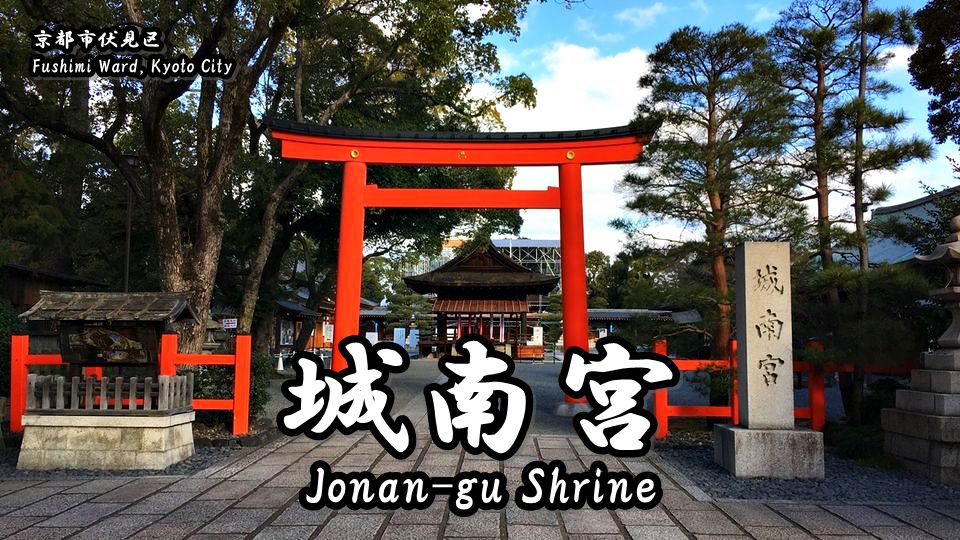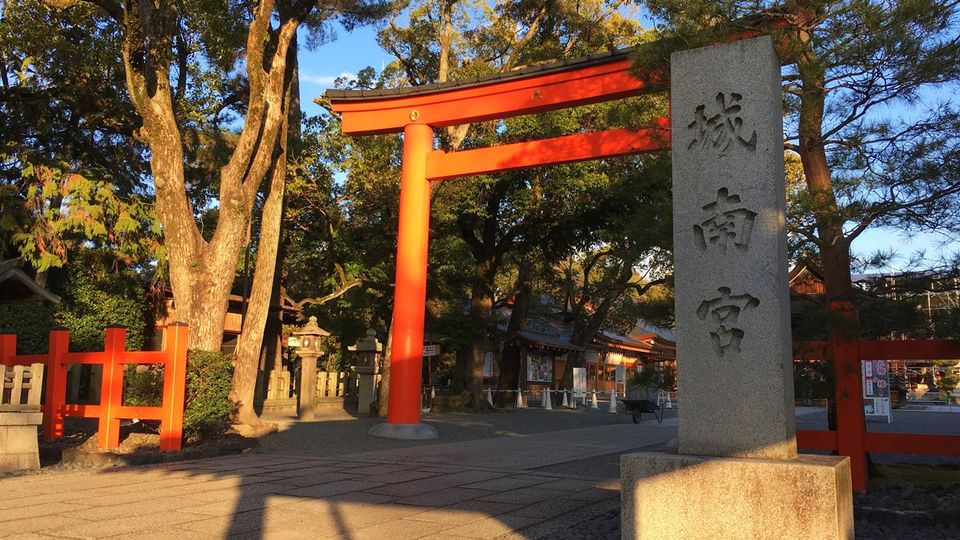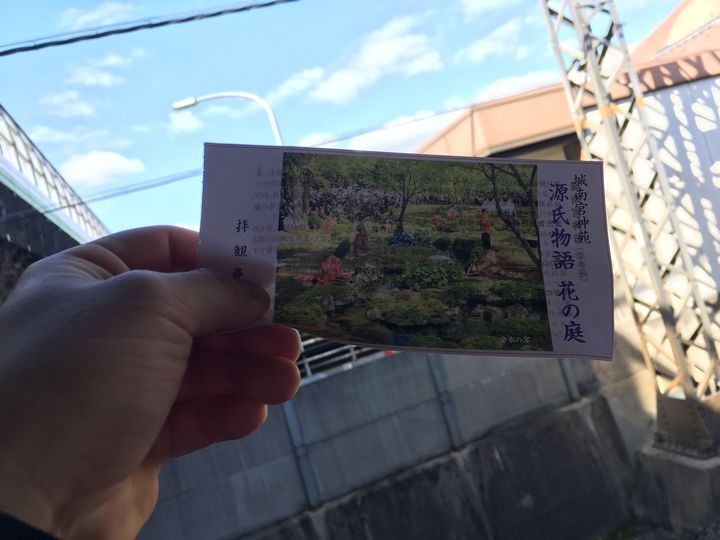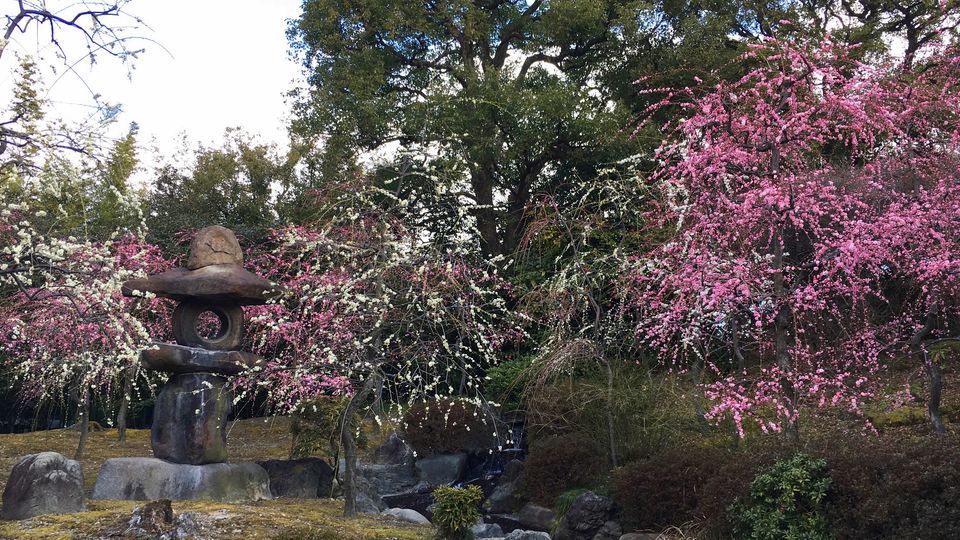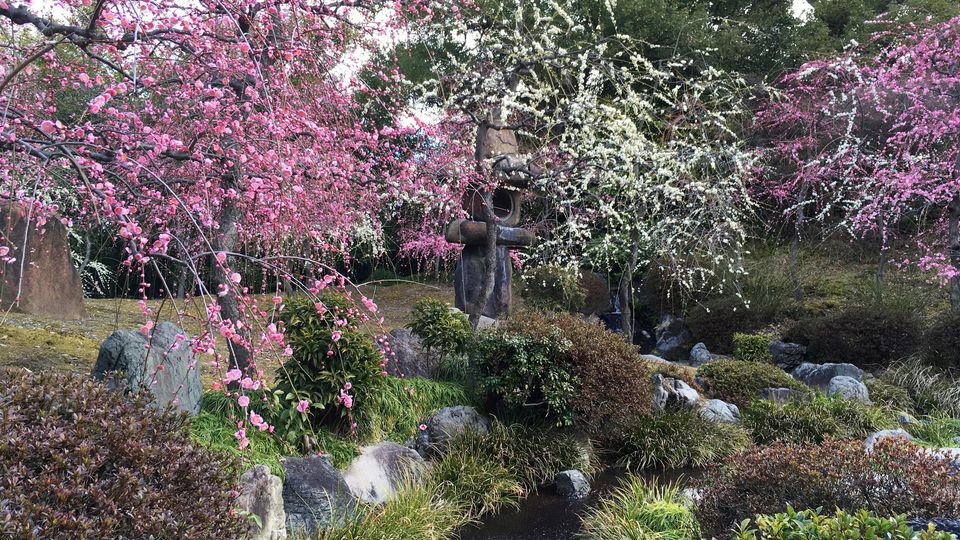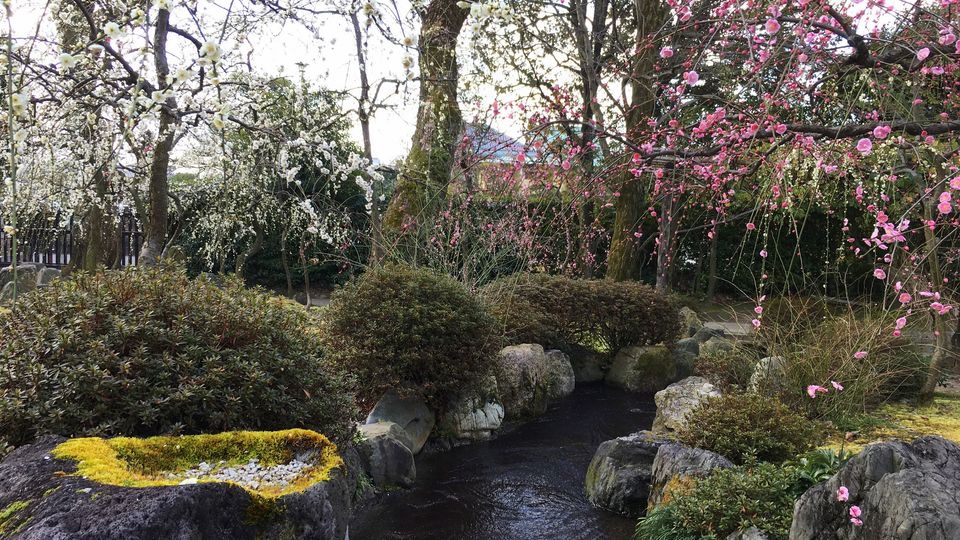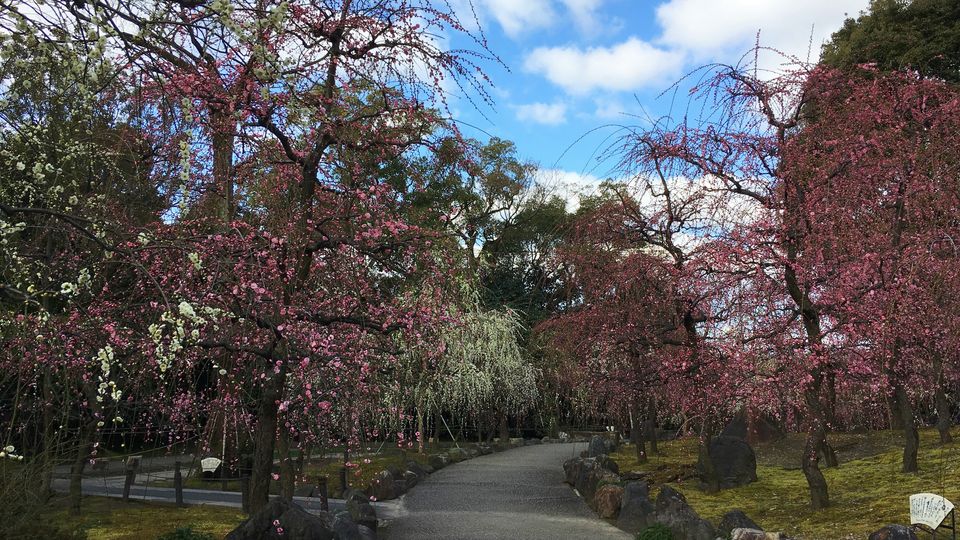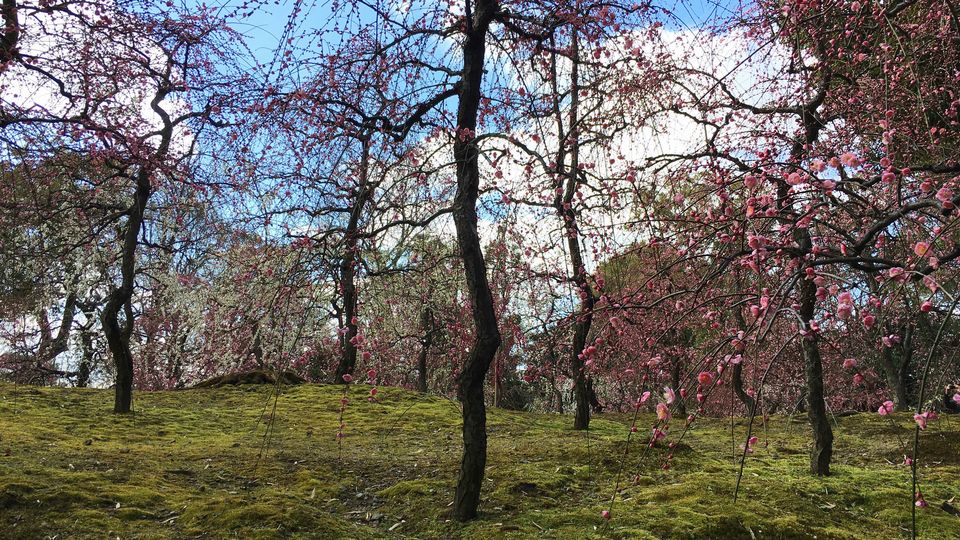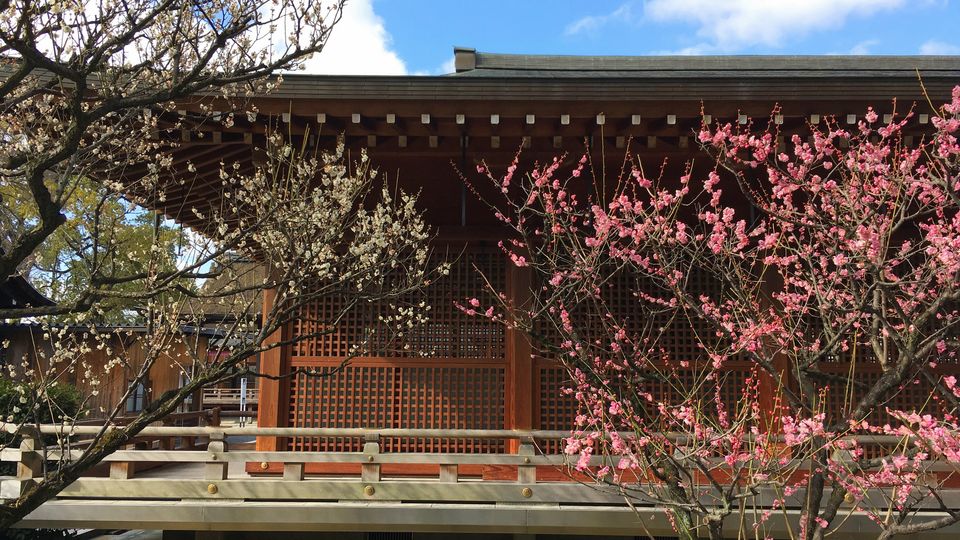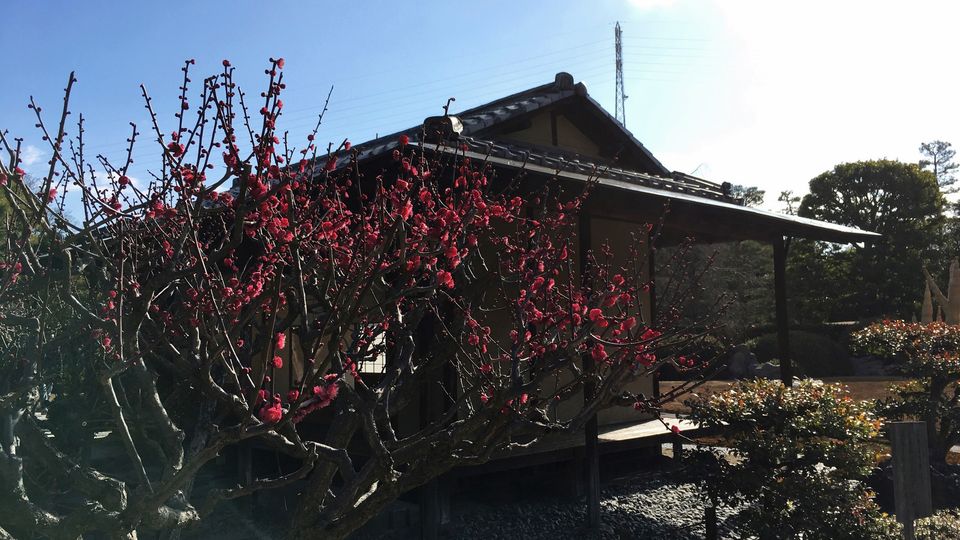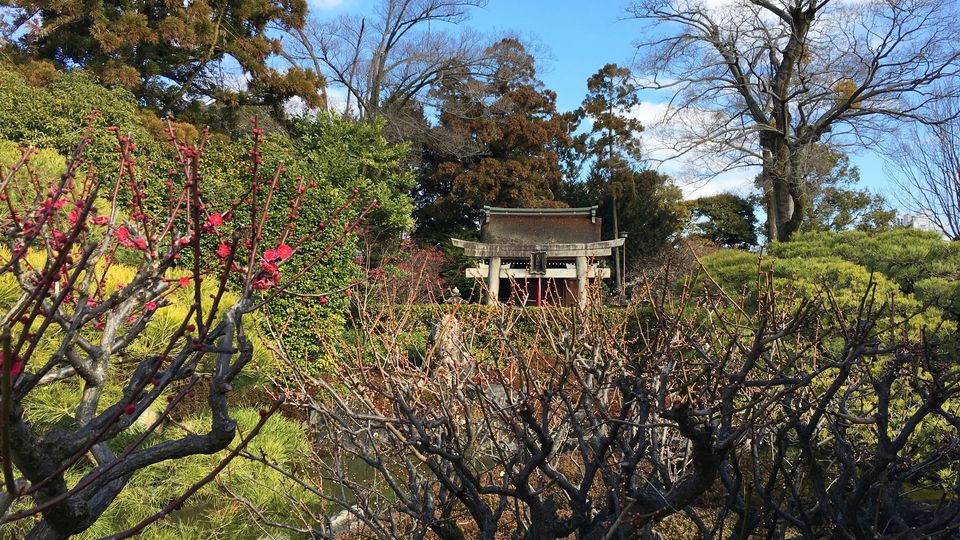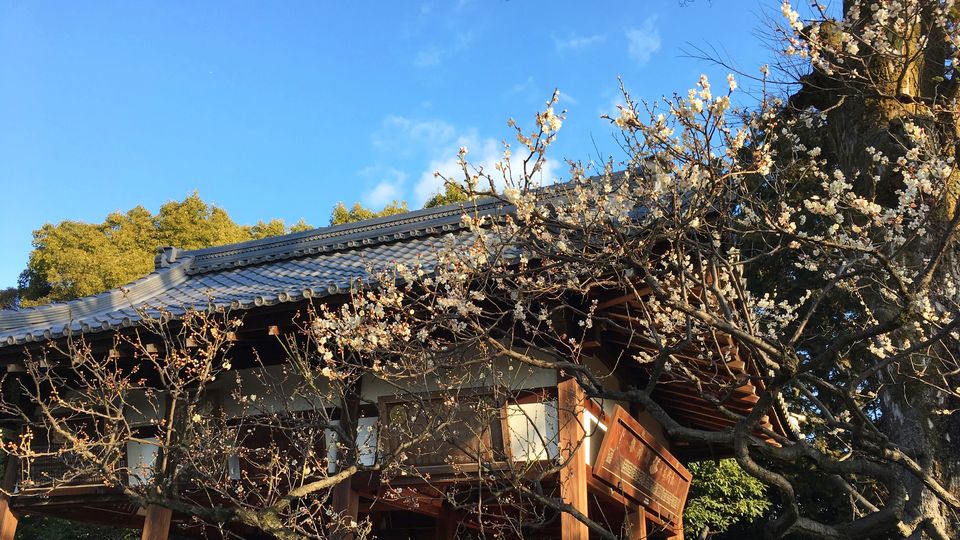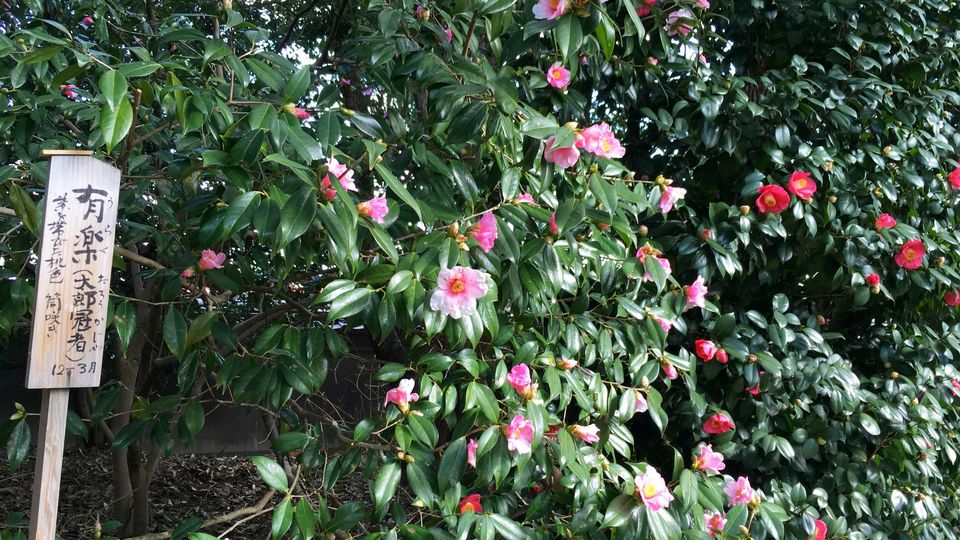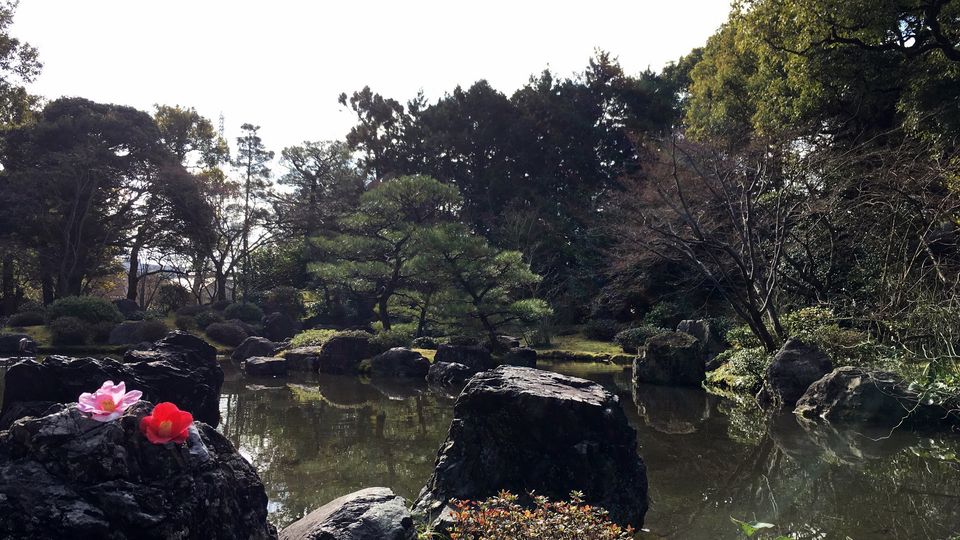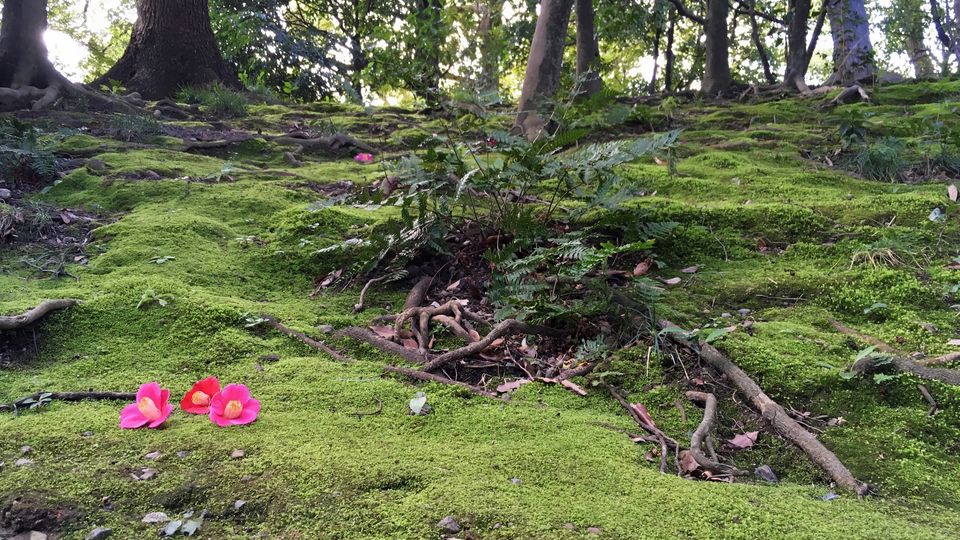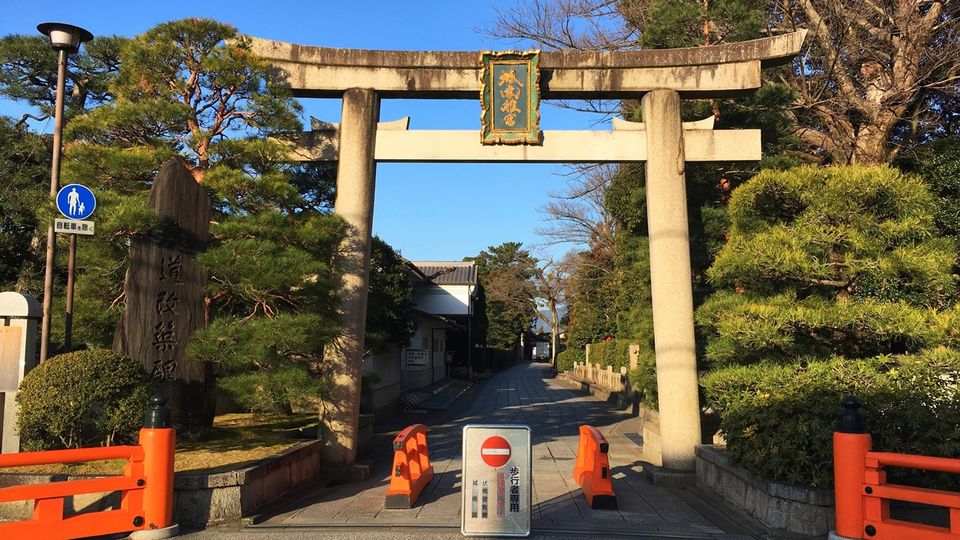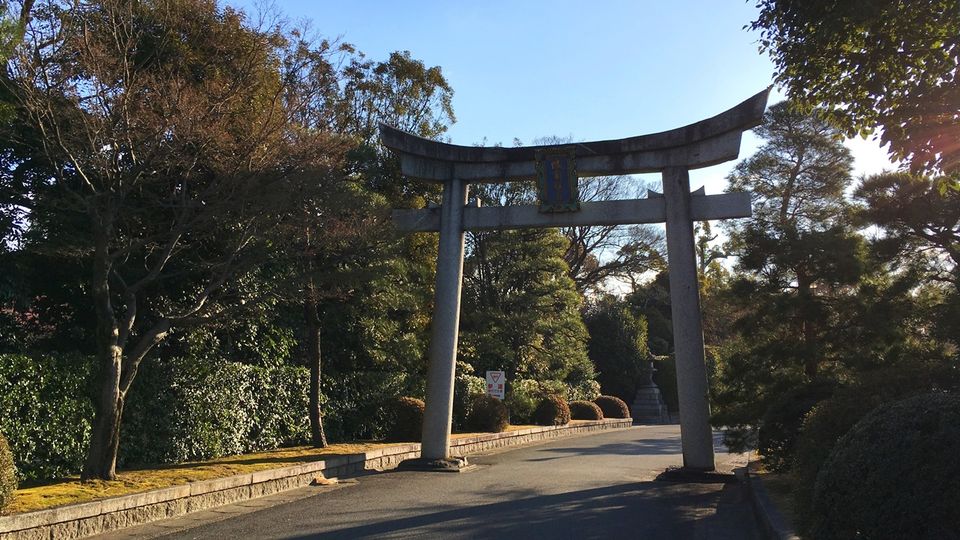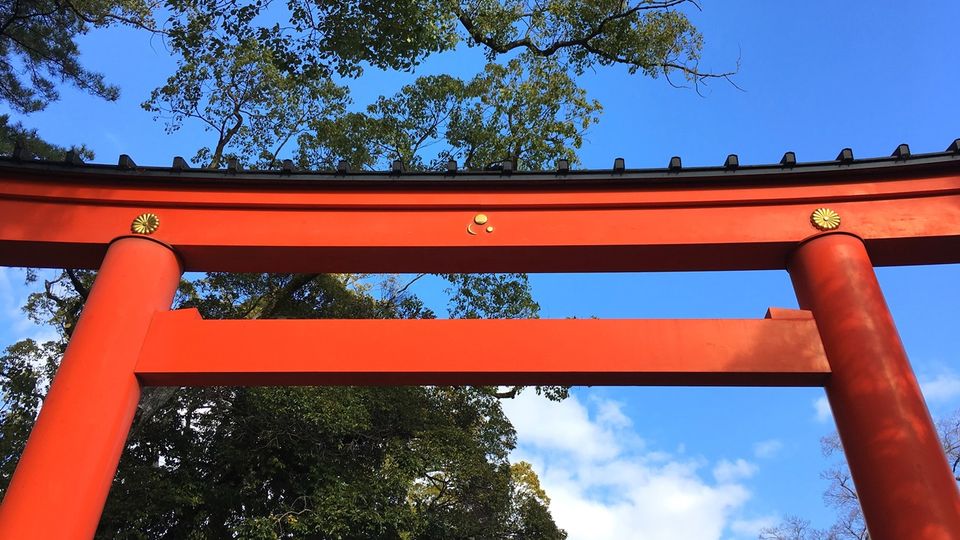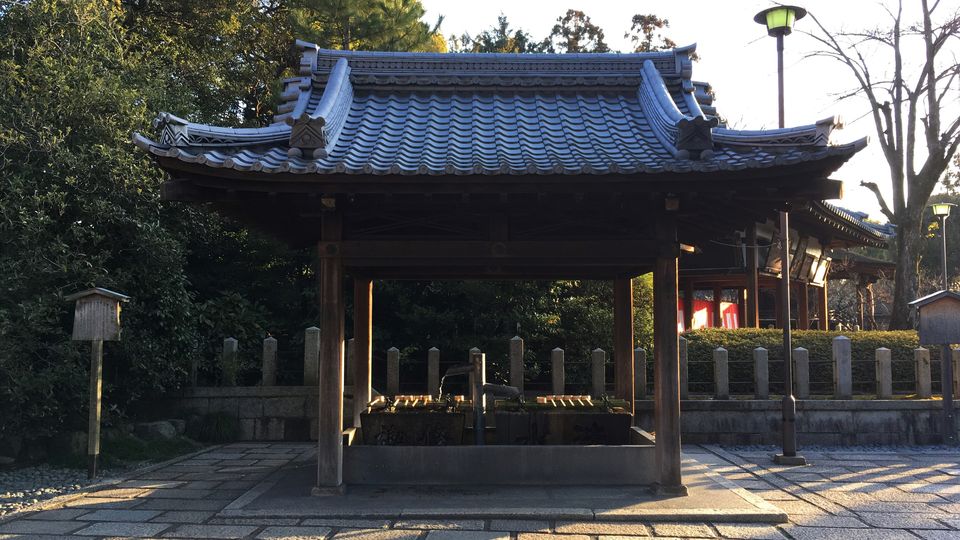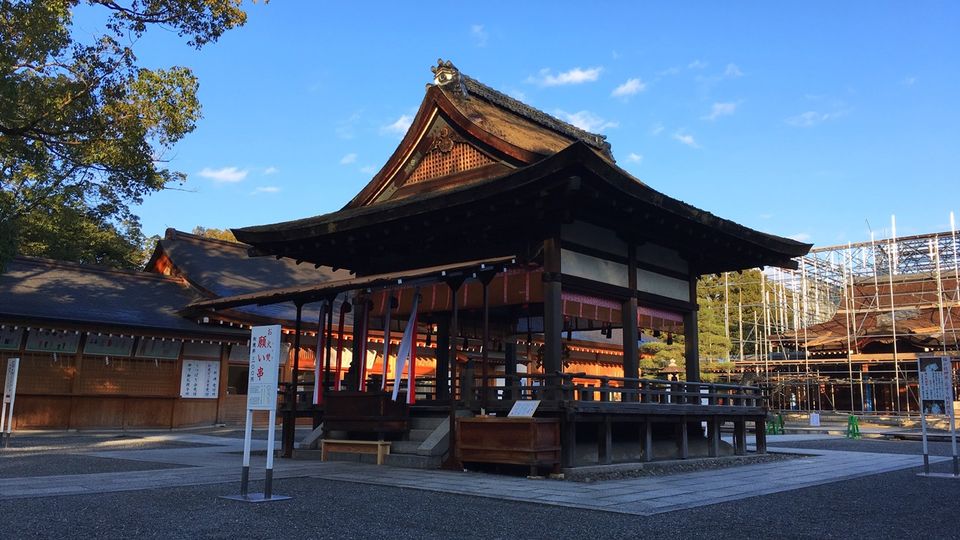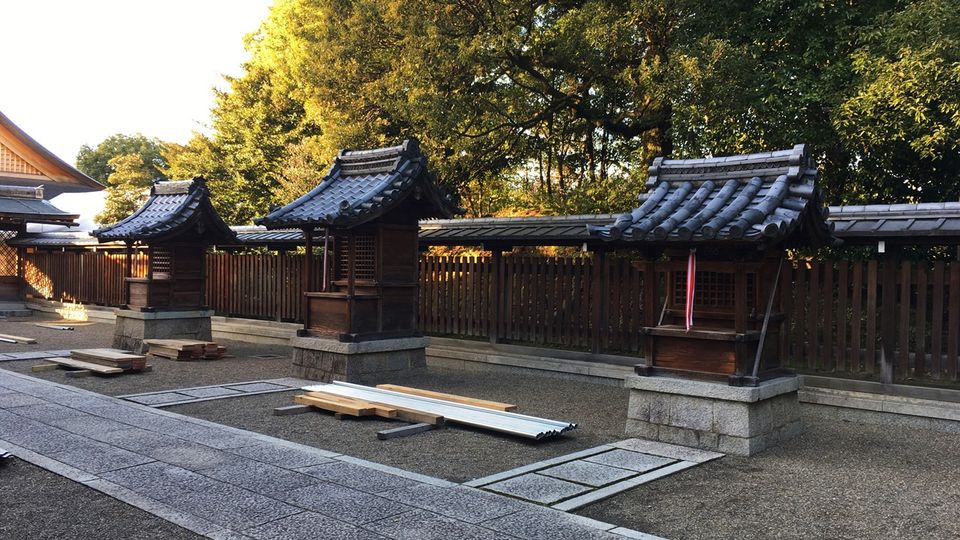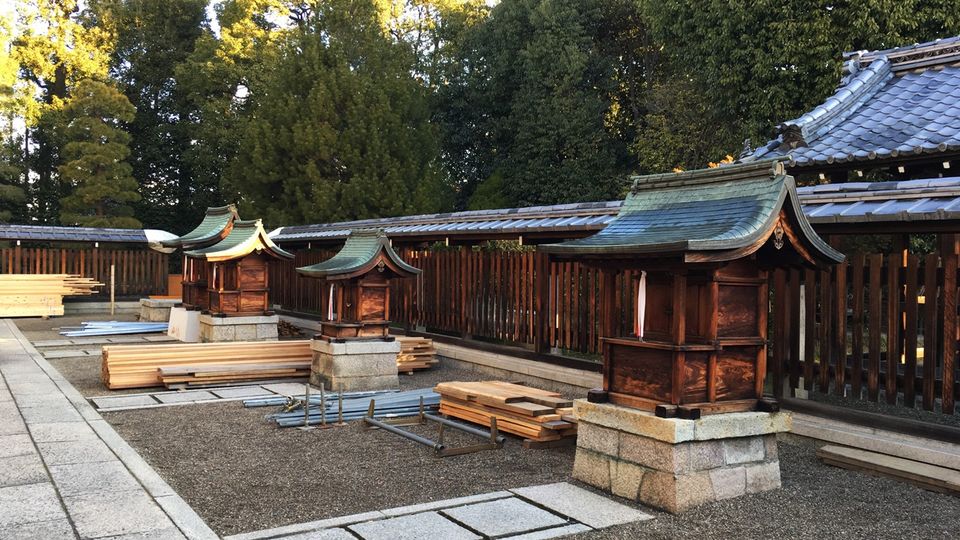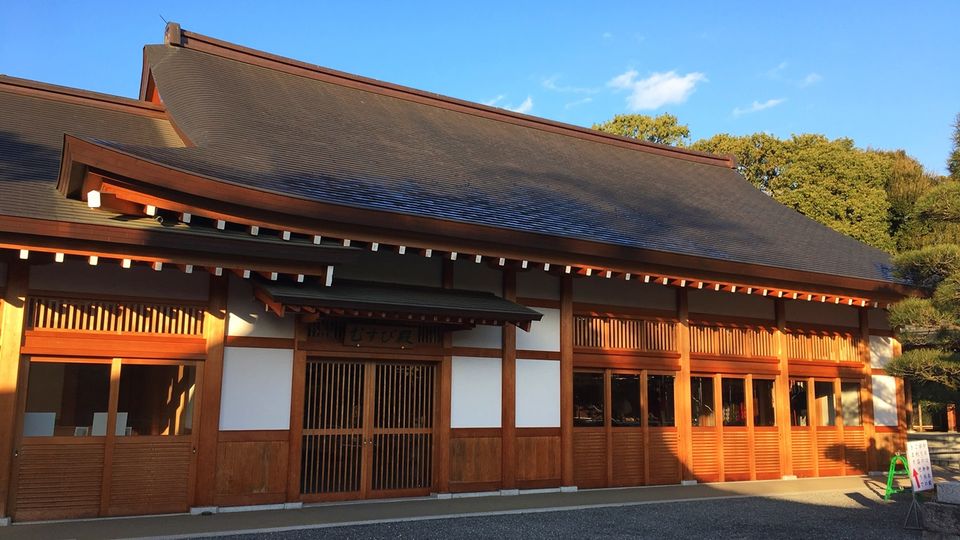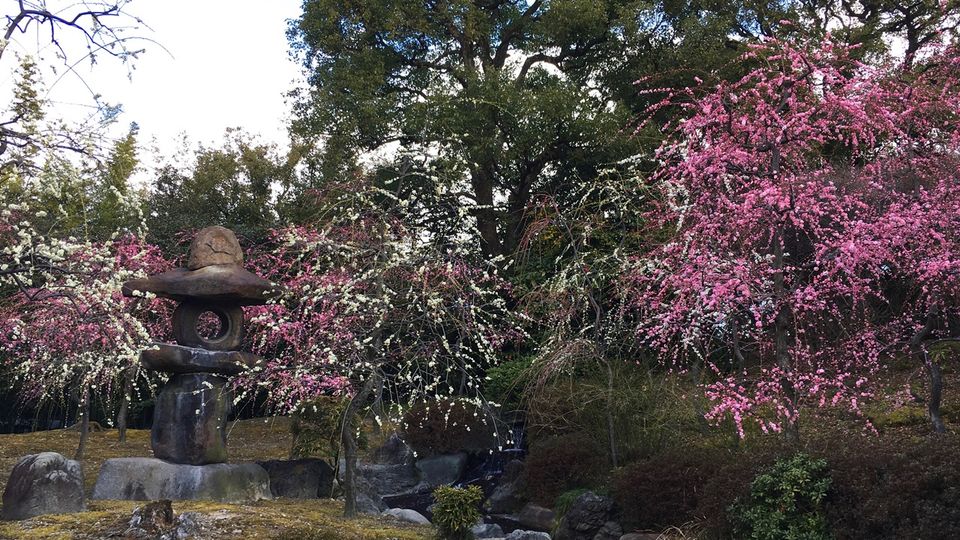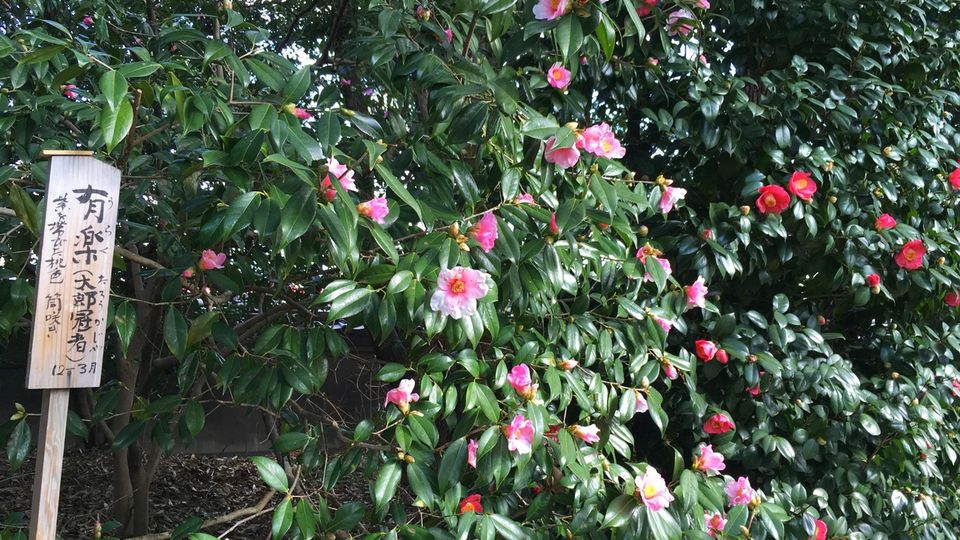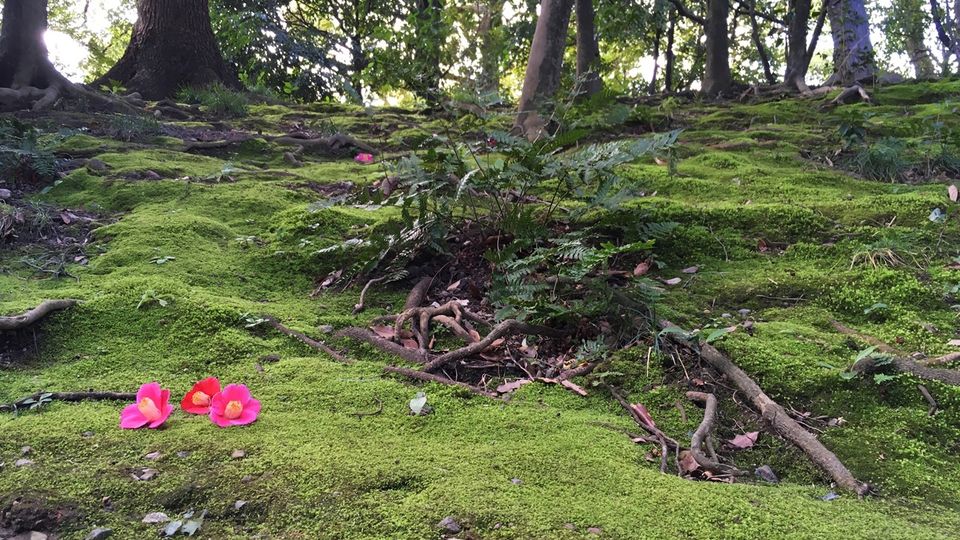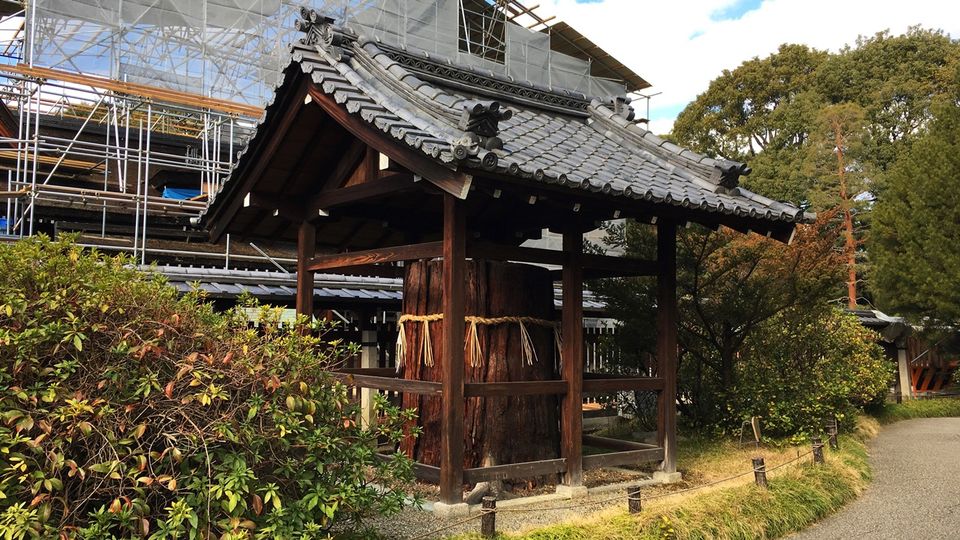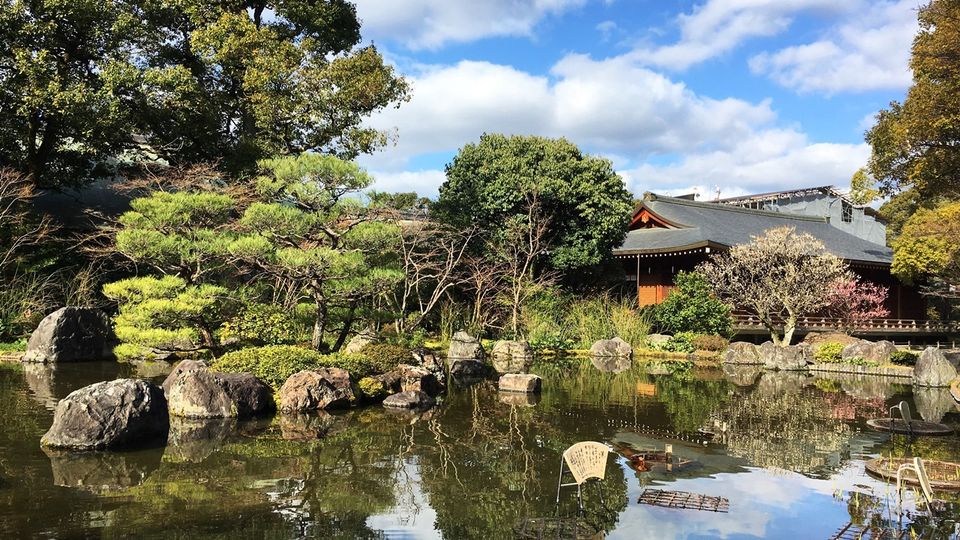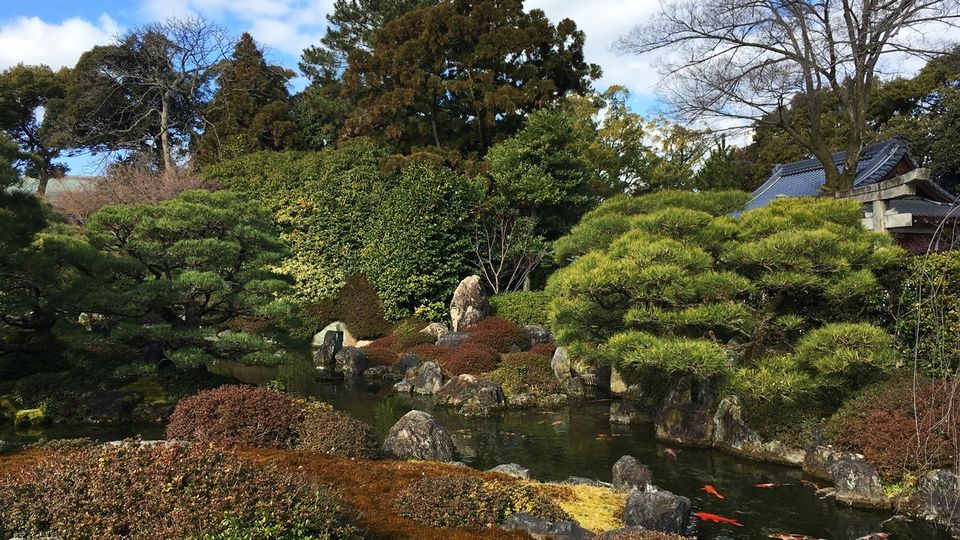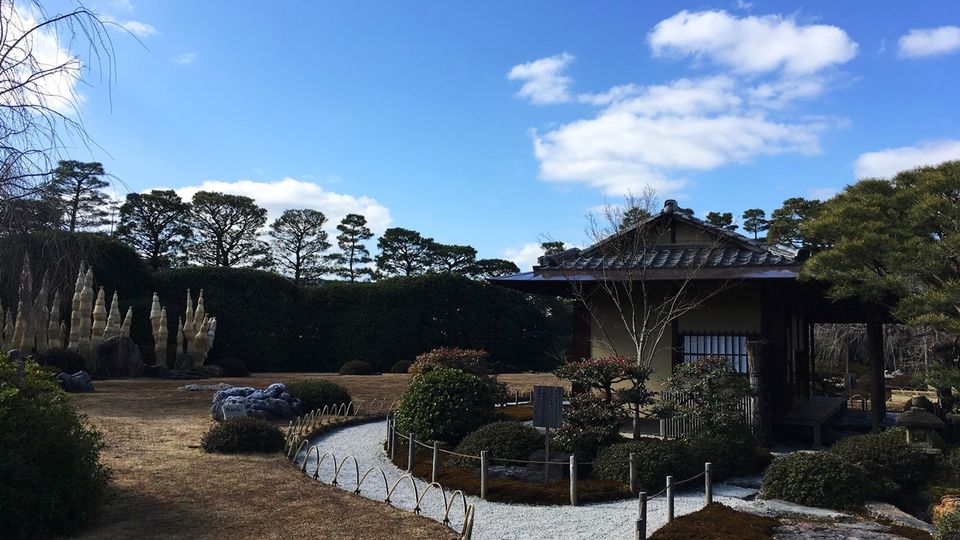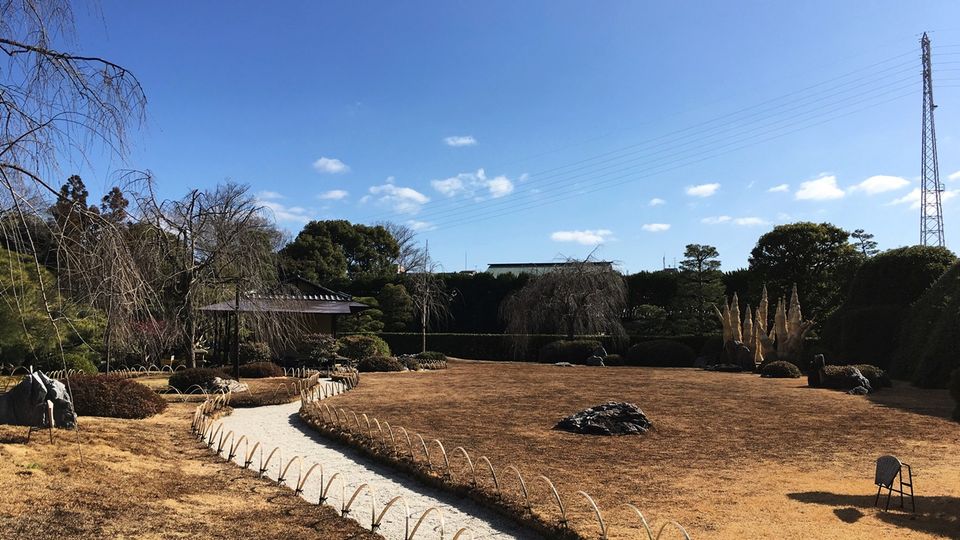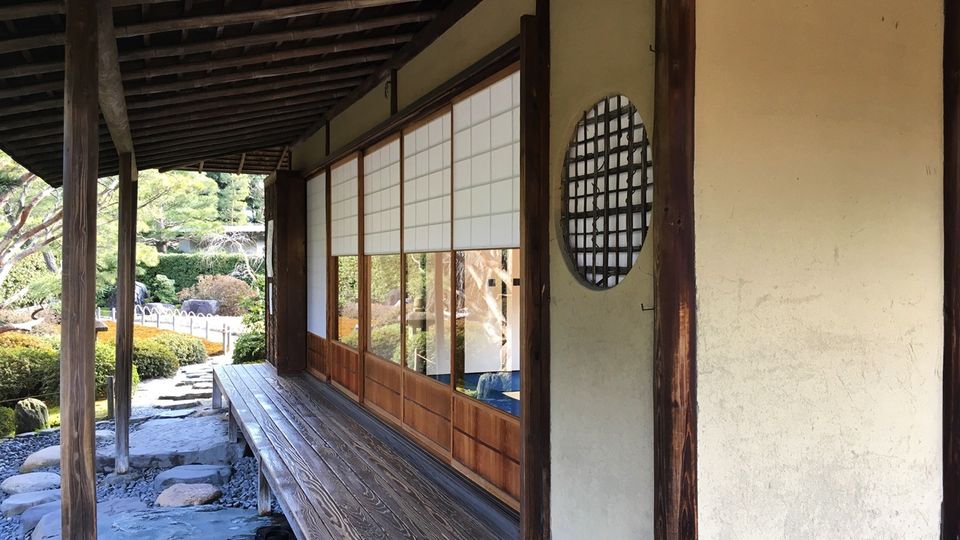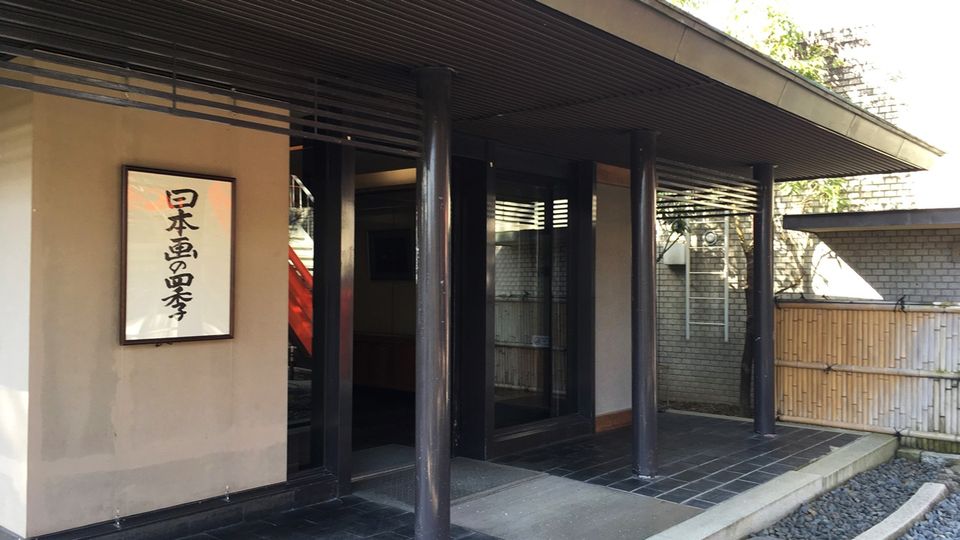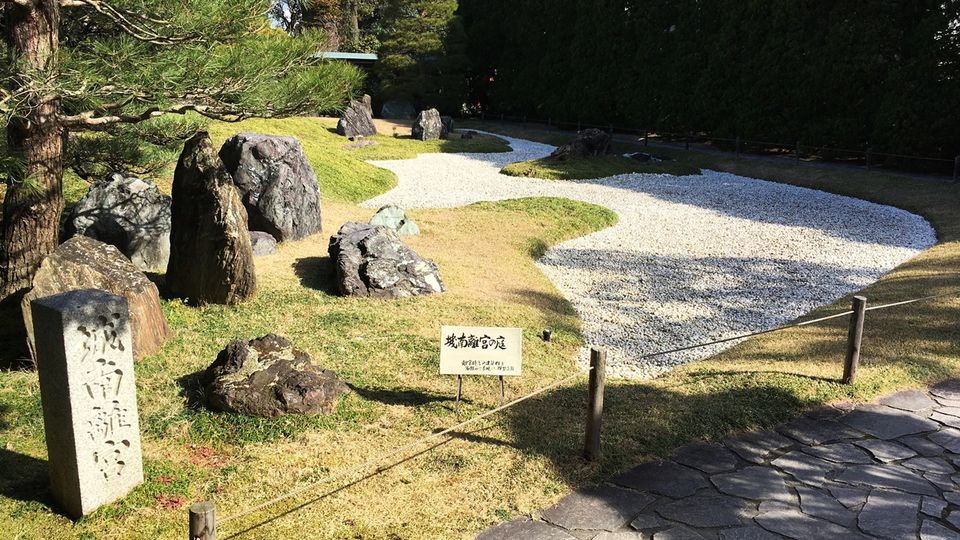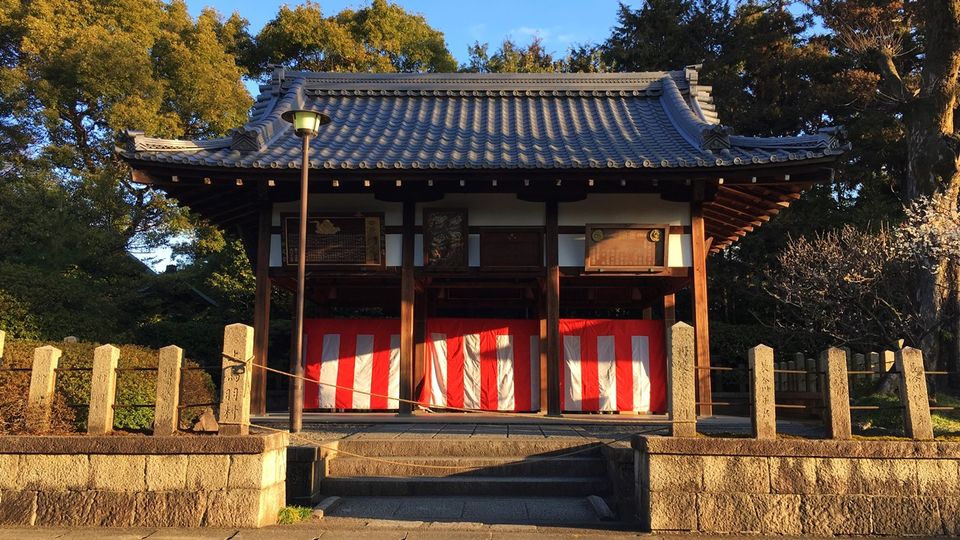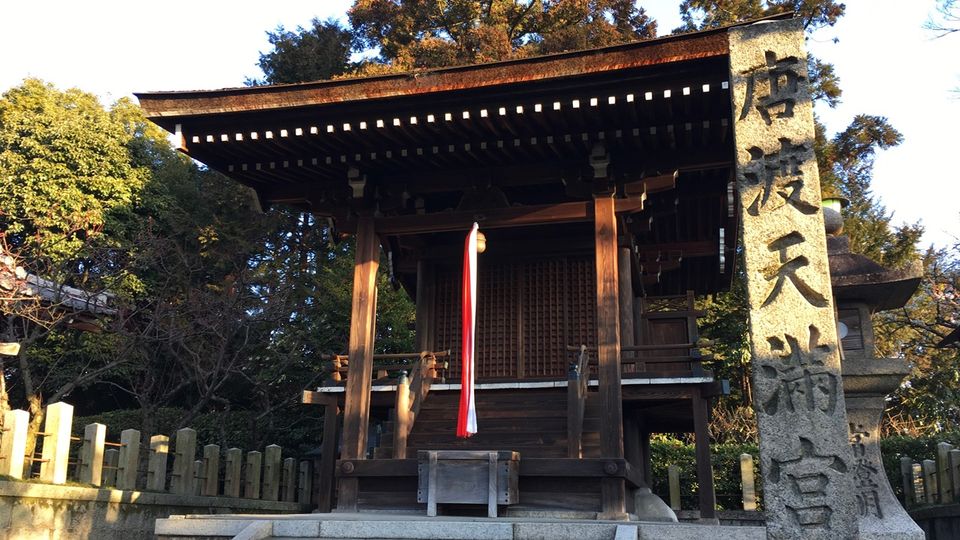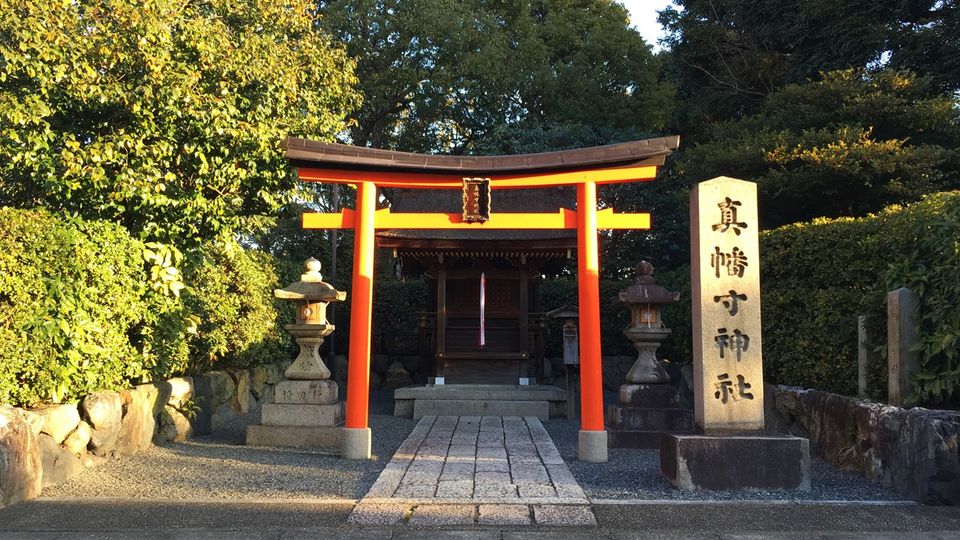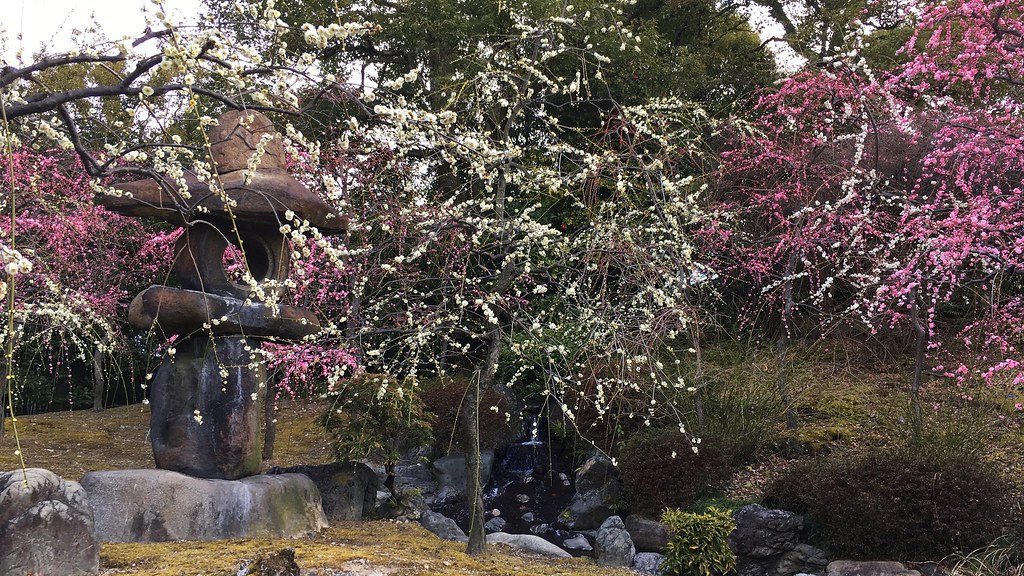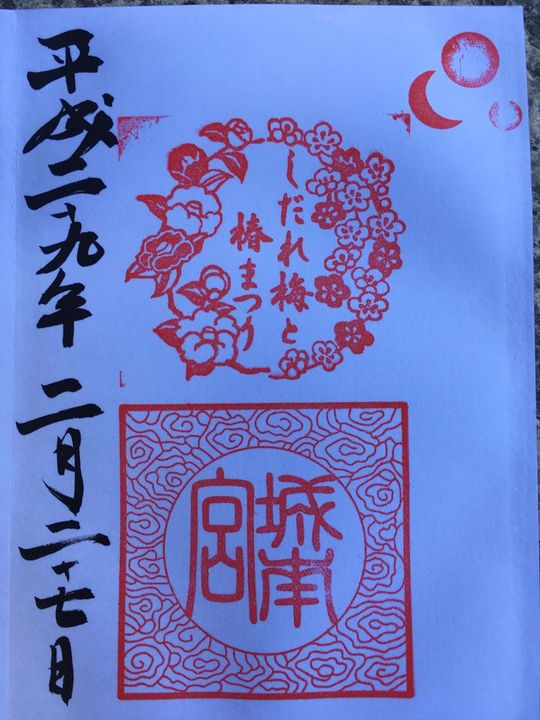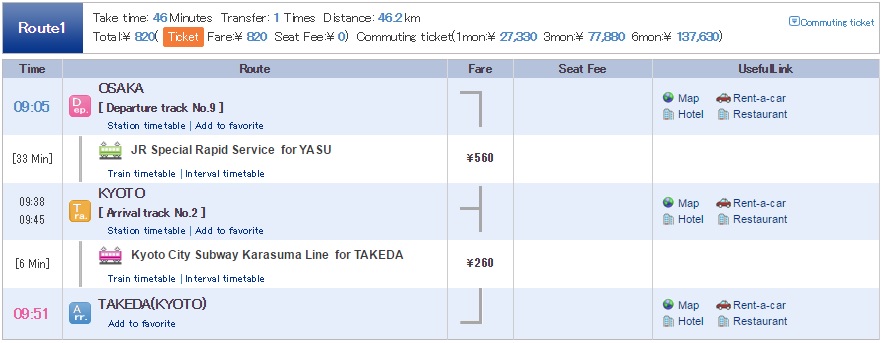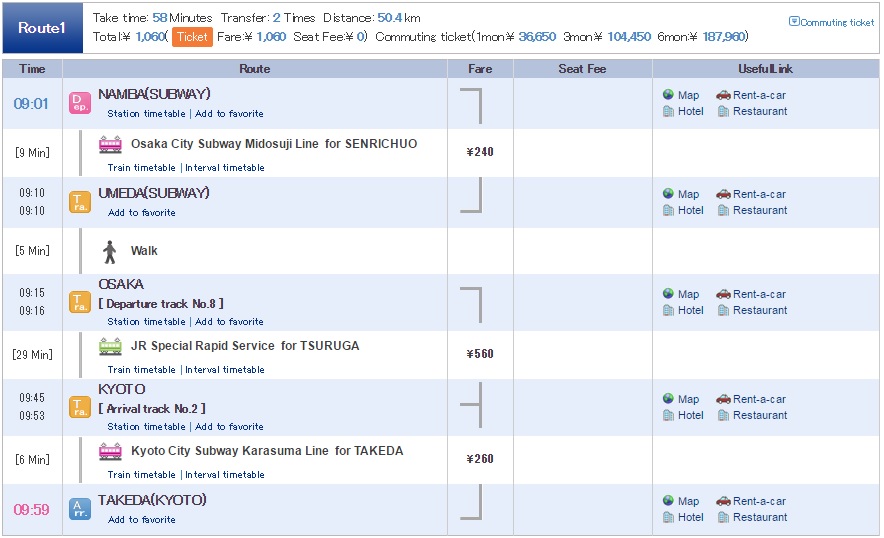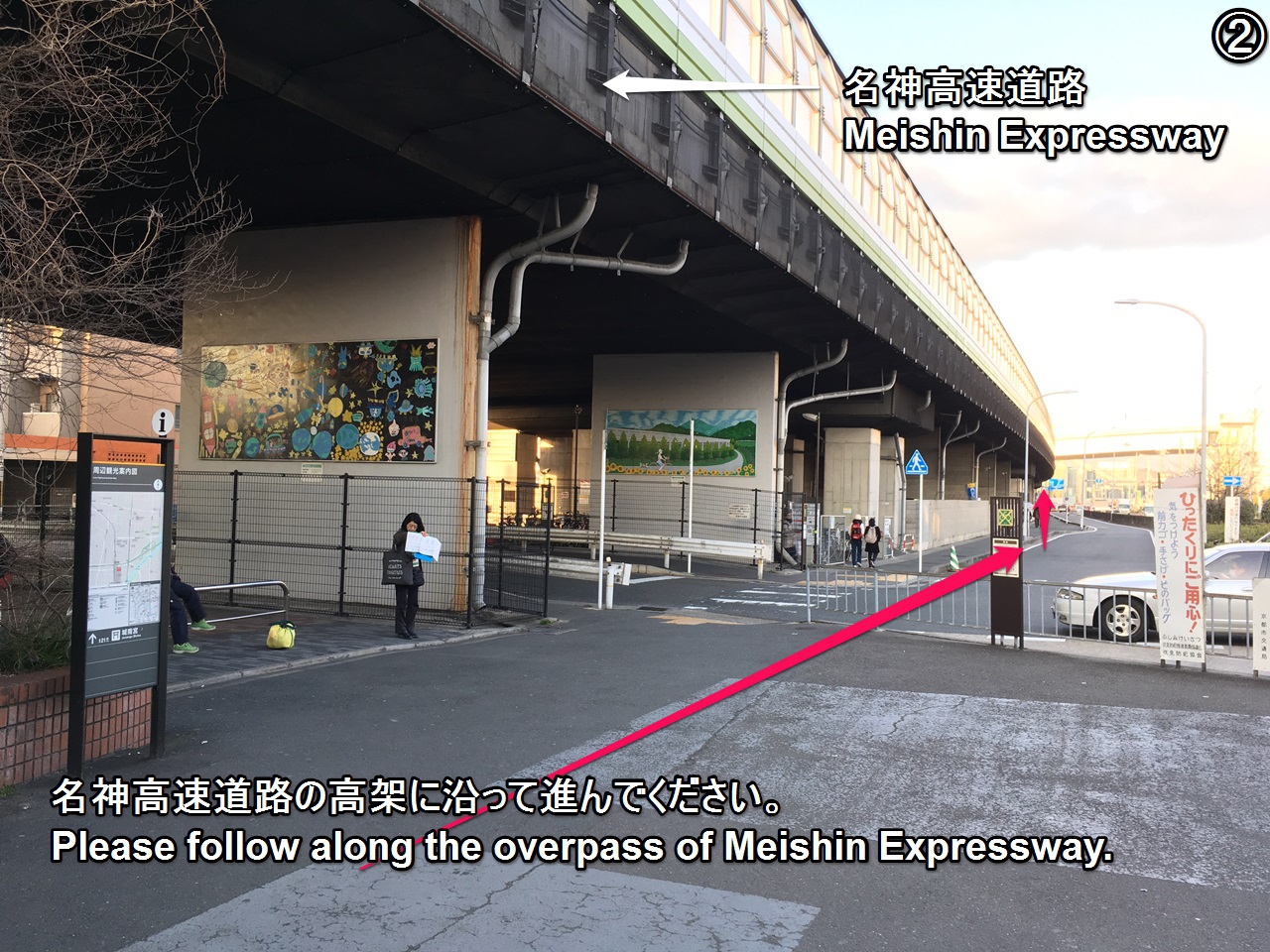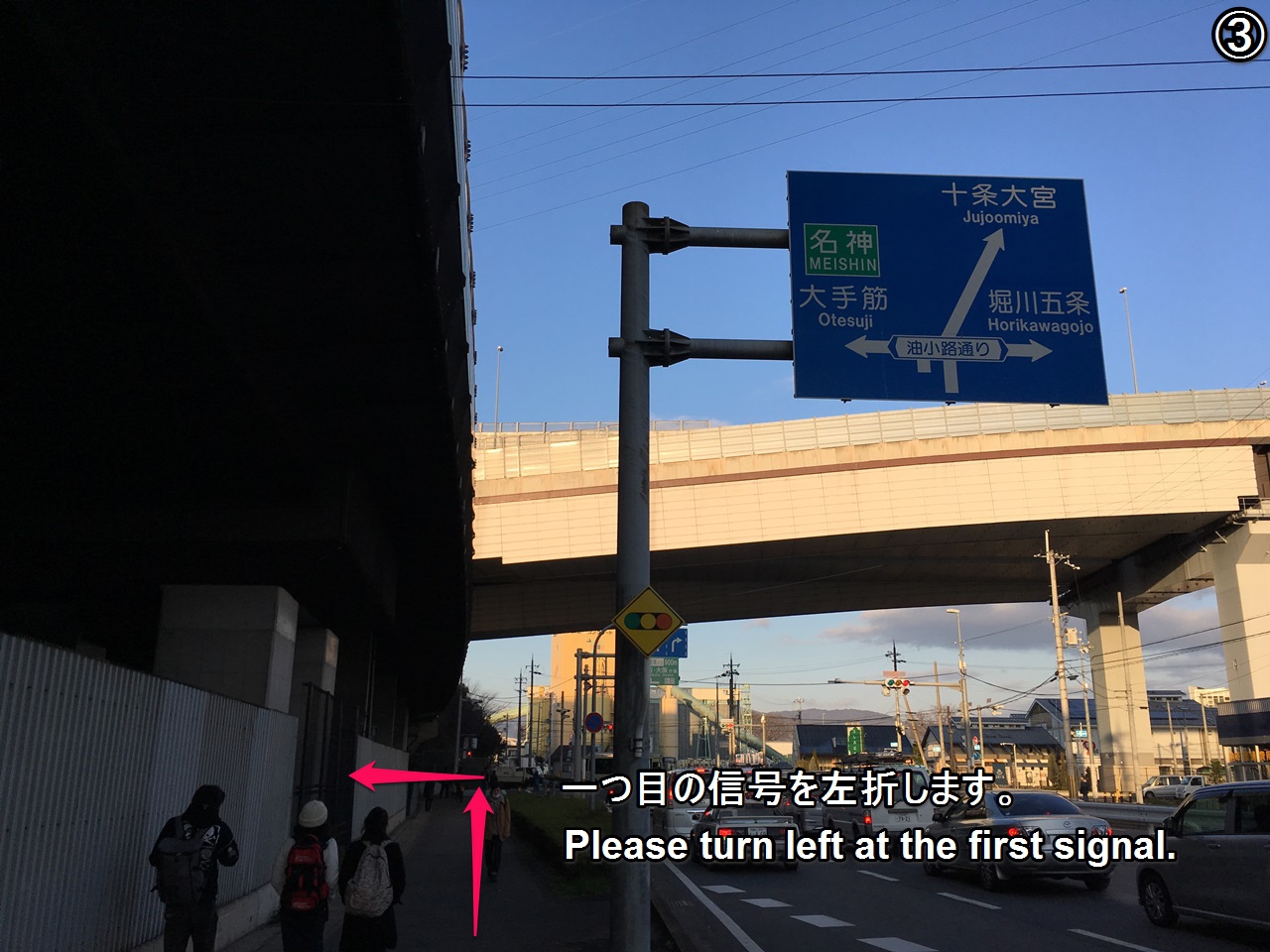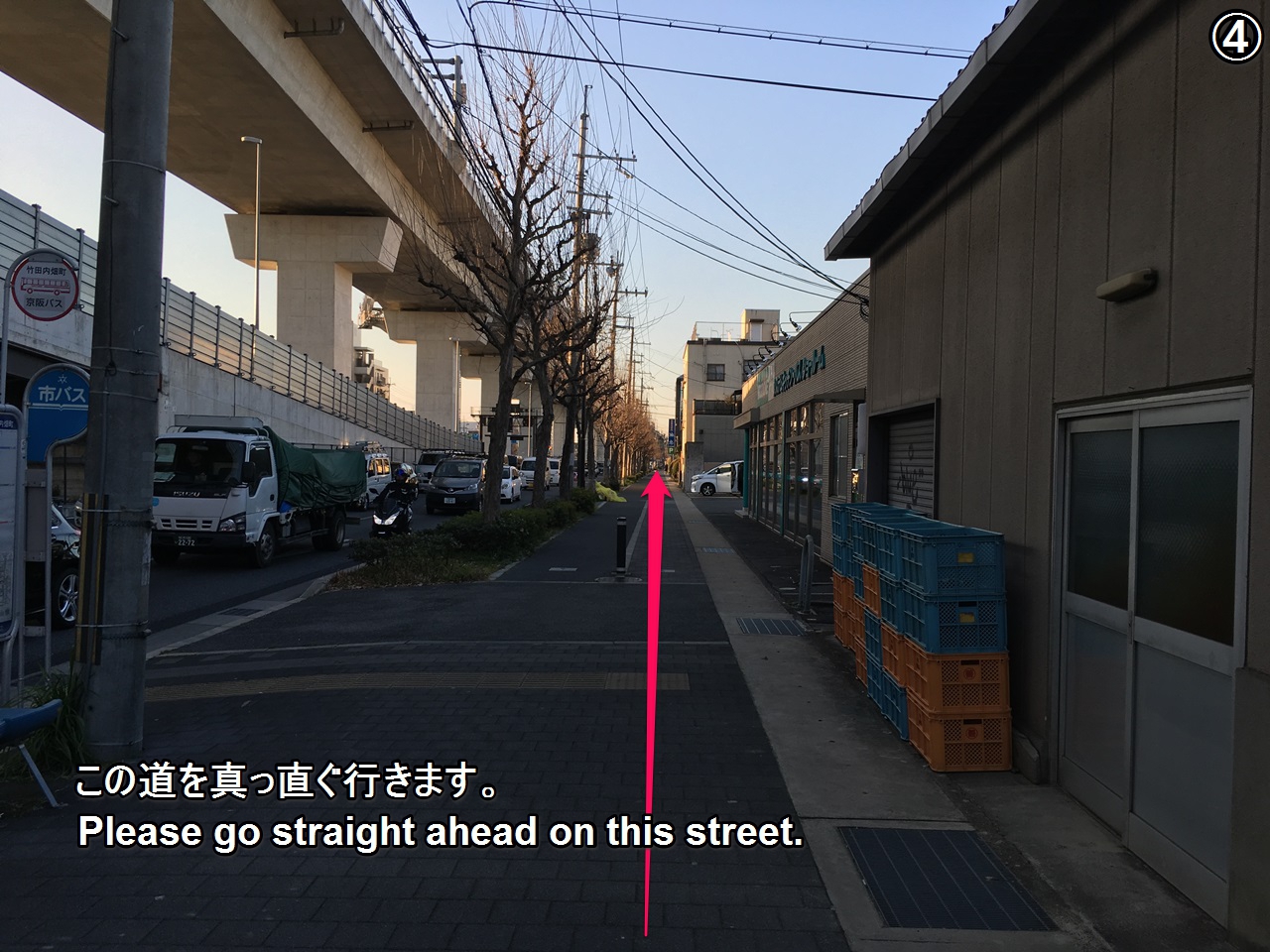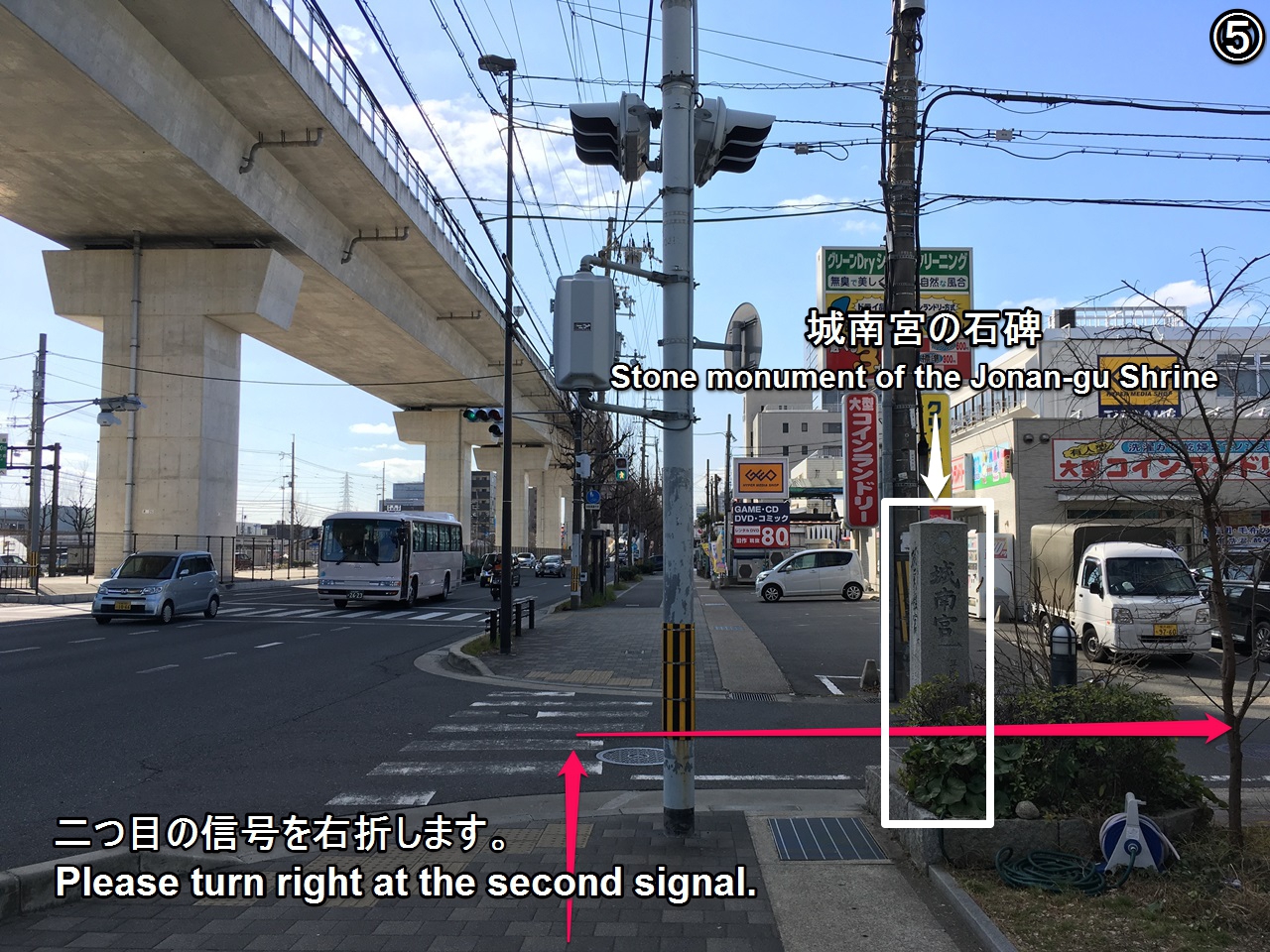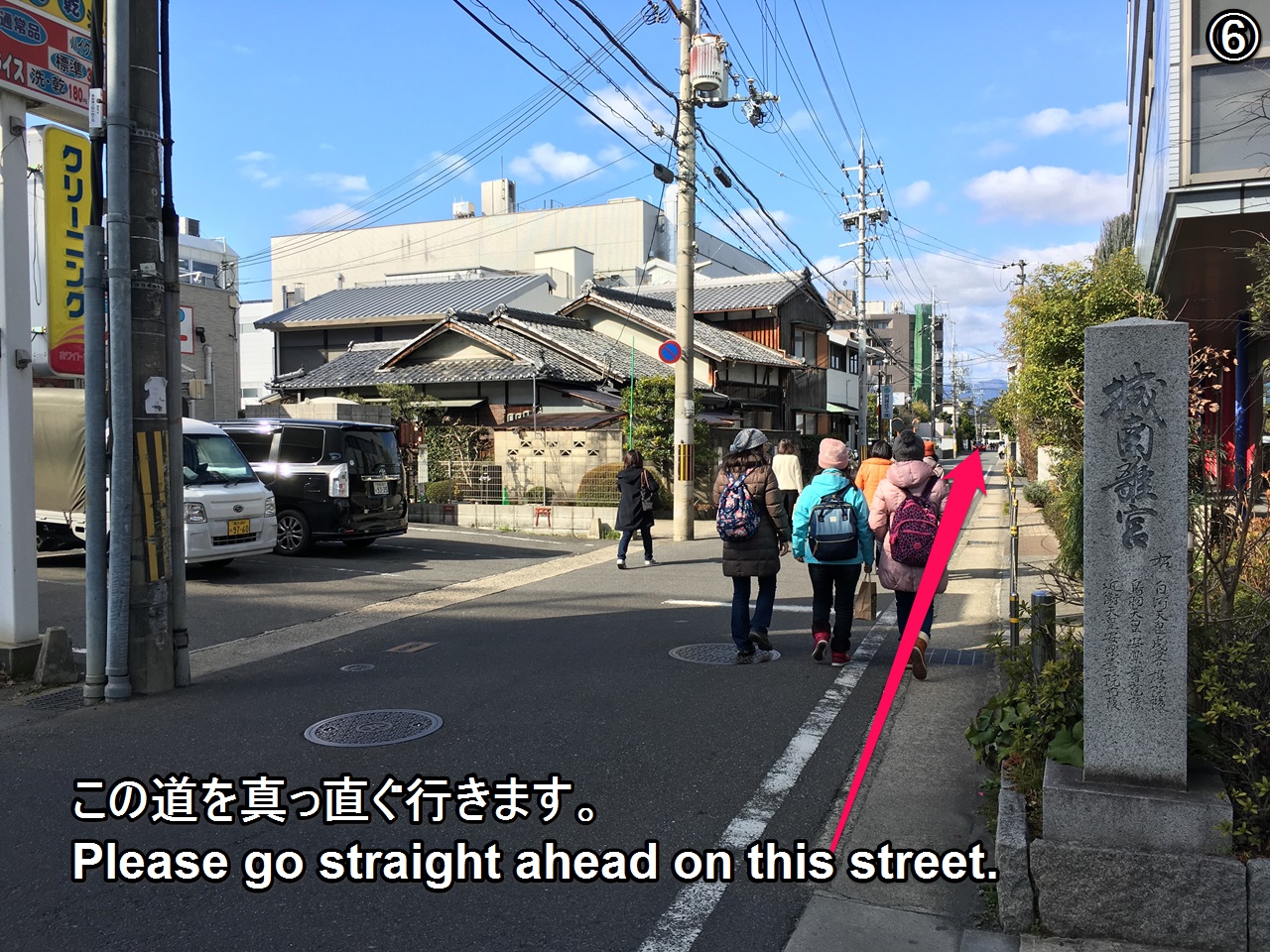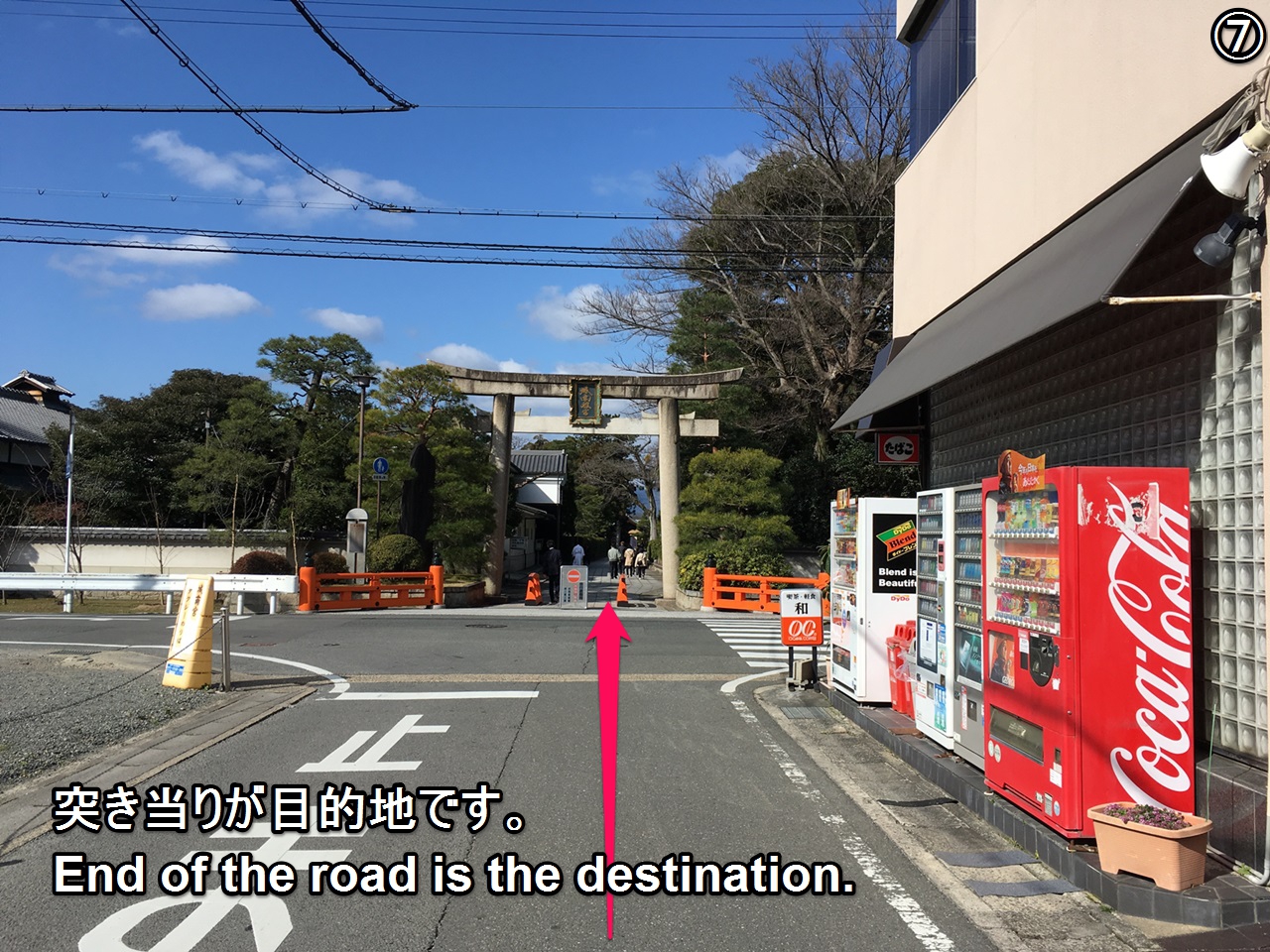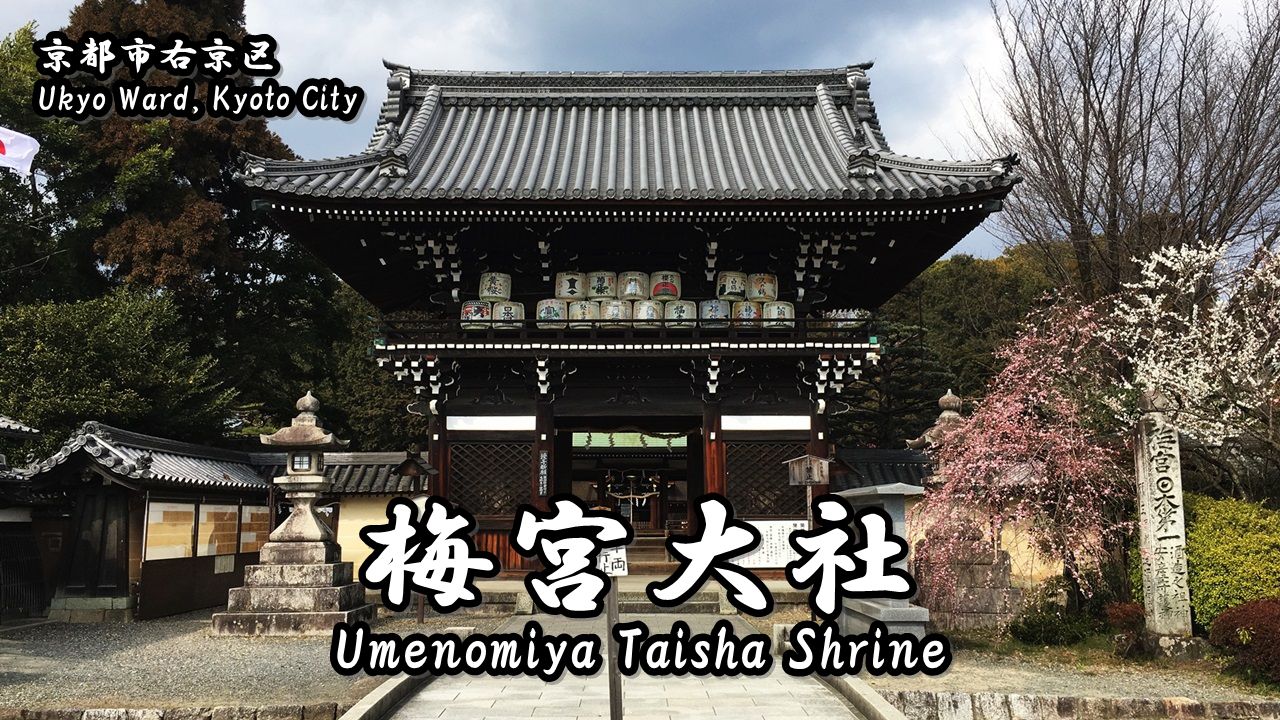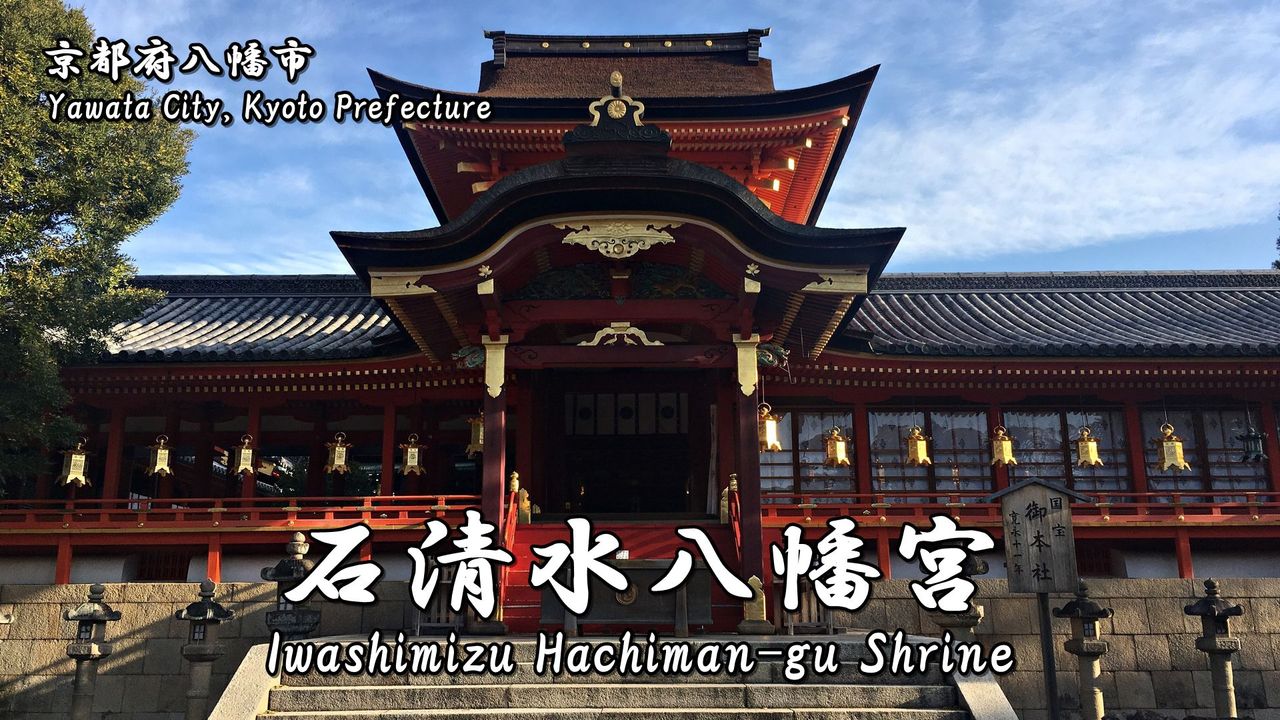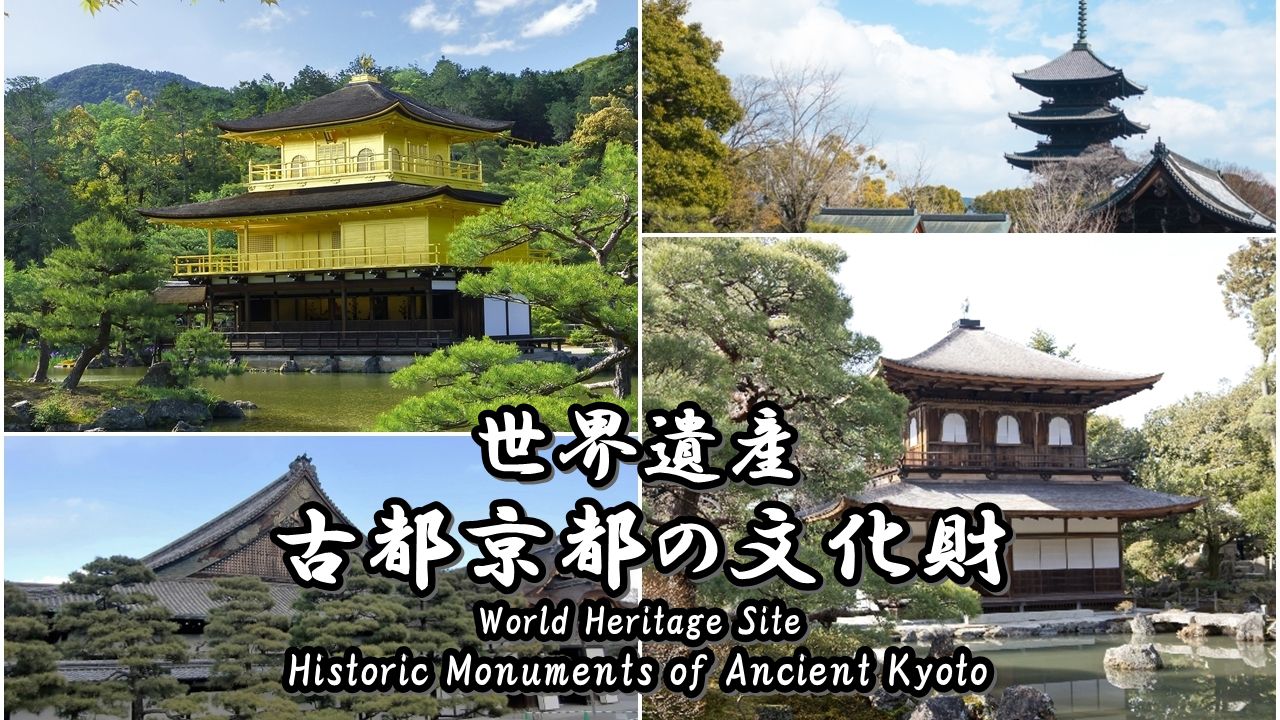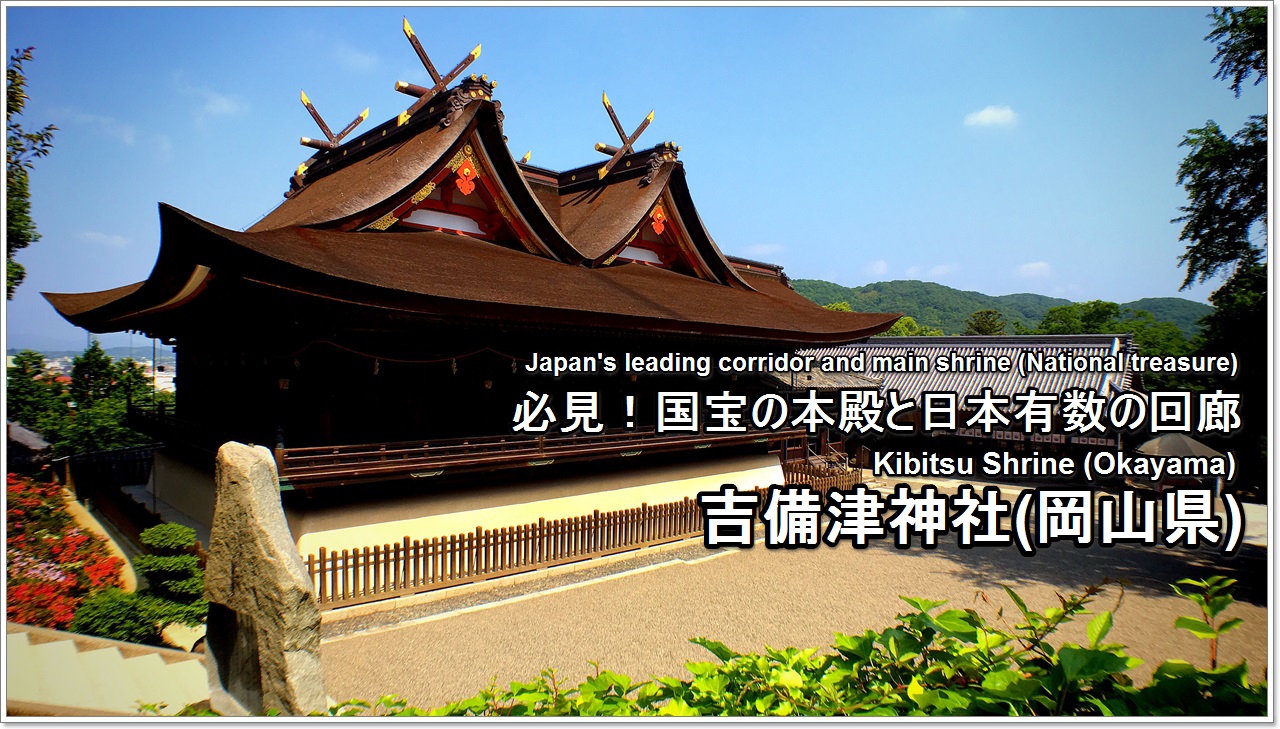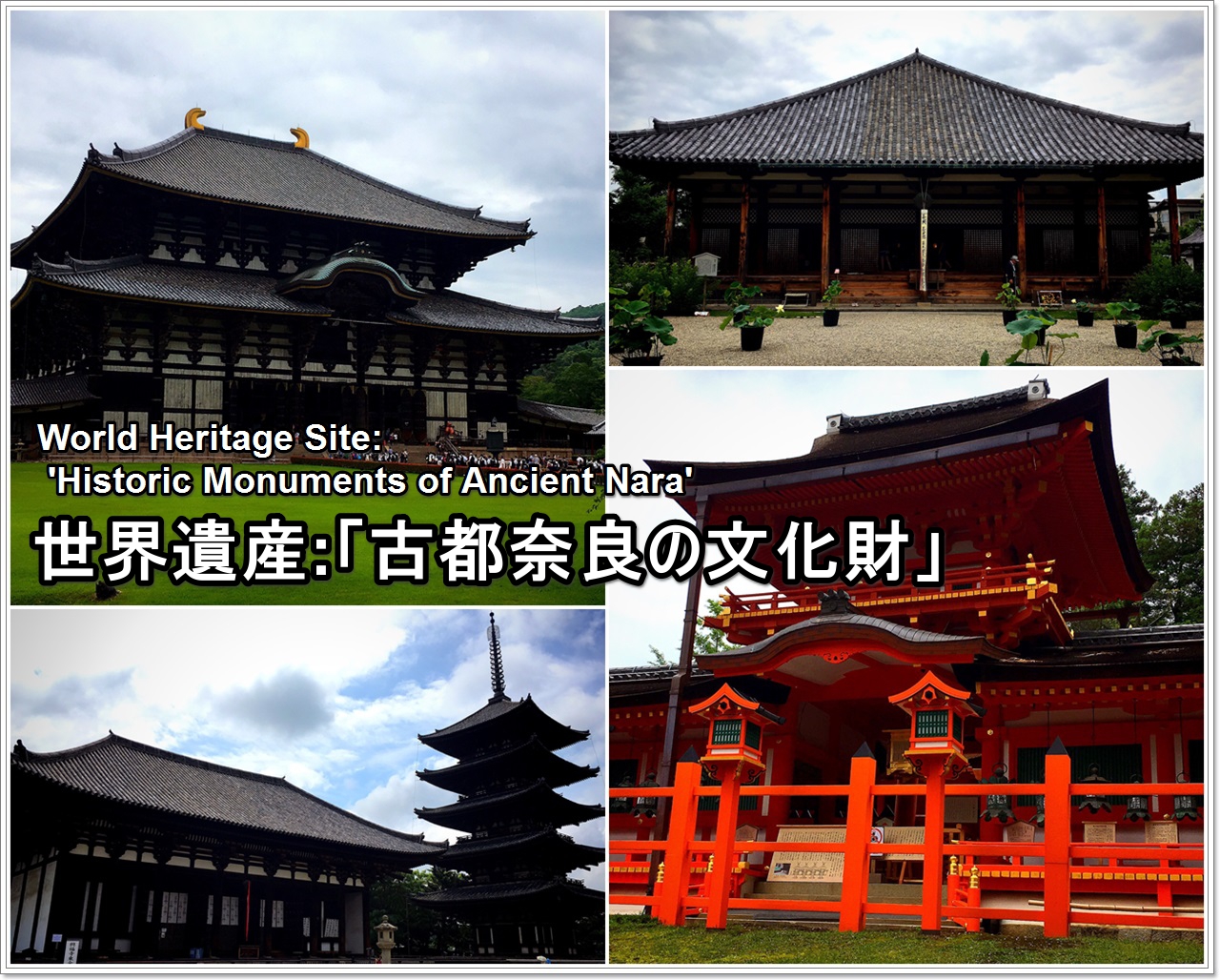Jonan-gu Shrine (城南宮) is a Shinto shrine which is located in Fushimi Ward, Kyoto City.
There are five important Shinto shrines called ‘Kyoto-Gosha (京都五社)‘ in Kyoto.
(Heian-jingu Shrine (平安神宮) is located in the center of Kyoto-Gosha.)
Jonan-gu Shrine is one of Kyoto-Gosha and has the role of a shrine protecting a south direction of Heian-jingu Shrine.
It is also very famous for ume (Japanese plum) garden.
If you want to see a beautiful ume (Japanese plum) blossoms, please visit this shrine.
History of Jonan-gu
Let’s study the history of this shrine with me before introducing Jonan-gu (城南宮).
I think that we can enjoy the sightseeing of this shrine more by learning the history of it. XD
It was built to Kyoto during the transfer of the national capital to Heian-kyo (the ancient capital of Japan in current Kyoto) in 794 of the Heian period.
So, it has about 1,200 years of history.
In the late Heian period, this shrine became part of the Imperial Palace of Emperor Shirakawa.
In the Meiji period, it became a battle place for ‘Battle of Toba–Fushimi‘.
About Jonan-gu
Information
Address:7, Nakajima Tobarikyucho, Fushimi-ku Kyoto-shi, Kyoto, 612-8459, Japan
Phone Number:+81-75-623-0846
Foundation:not known (at least 1, 200 years)
Founder:not known
Main enshrined deity:Kuninotokotachi no Mikoto (国常立尊)
Open (Shin-en Garden)
9:00~16:30
Admission Fee (Shin-en Garden)
| Adults | 600 yen |
| Elementary / Junior high students | 400 yen |
Other information
・Please ask temple’s staff where you can take photos and videos.
・Worship method of a shinto shrine and a buddhist temple, please refer to the following article.
Shrine’s Website
Next, Let’s go to see highlights of this shrine with me!
Information of Ume (Japanese plum) Festival
Many ume trees are planted in the garden of the precincts, and ‘Ume Festival’ is held every year in spring.
Ume blossoms are viewed in Late February ~ Early March.
It is held in Mid February – Mid March.
Photos of Ume (Japanese plum) Festival
Highlights of Jonan-gu
- 東鳥居:Higashi (east) Torii
- 西鳥居:Nishi (west) Torii
- 城南鳥居:Jonan Torii
- 菊水若水(手水舎):Kikusuiwakamizu (Chozuya)
- 拝殿:Hai-den hall
- 本殿・祈祷殿:Hon-den・Kito-den hall
- 末社(西側):Sub-shrine (West side)
- 末社(東側):Sub-shrine (East side)
- 神楽殿:Kagura-den hall
- むすび殿:Musubi-den hall
- 神輿舎:Shinyo-sha
- 神苑*:Shin-en Garden*
- 御神木*:Sacred tree*
- 平安の庭*:Heian-no-niwa (garden)*
- 室町の庭*:Muromachi-no-niwa (garden)*
- 桃山の庭*:Momoyama-no-niwa (garden)*
- 楽水軒*:Rakusui-ken (Tea house)*
- 水石亭:Suiseki-tei
- 城南離宮の庭*:Jonanrikyu-no-niwa (garden)*
- 絵馬舎:Ema-sha
- 三照宮:Sansho-gu
- 唐渡天満宮:Karawatari-Tenman-gu
- 真幡寸神社:Mahataki-jinja
This mark (*) is a pay area.
東鳥居:Higashi (east) Torii
This is Higashi (east) Torii.
Letters of the hengaku (framed statement) is written by Imperial Prince Arisugawanomiya Takahito (有栖川宮幟仁親王) who was an initiator of the Arisugawa style calligraphy.
西鳥居:Nishi (west) Torii
This is Nishi (west) Torii.
Letters of the hengaku (framed statement) is written by Hisatada KUJO (九条尚忠) who was the great-grandfather of the Emperor Showa (昭和天皇).
城南鳥居:Jonan Torii
This is Jonan Torii.
This torii’s roof is covered with a tiled roof.
It is very rare.
菊水若水(手水舎):Kikusuiwakamizu (Chozuya)
Chozuya is a place for cleaning hands and rinsing mouth.
拝殿:Hai-den hall
This is Hai-den hall.
In the case of the shinto ritual, Kagura (chanting and dancing performance dedicated to gods) is held in this hall.
本殿/祈祷殿:Hon-den・Kito-den hall
Hon-den and Kito-den hall were rebuilt in 1978.
It was under construction when I visited.
末社(西側):Sub-shrine (West side)
These are sub-shrines in the west of the main shrine.
末社(東側):Sub-shrine (East side)
These are sub-shrines in the east of the main shrine.
神楽殿:Kagura-den hall
Kagura-den hall was rebuilt in 1996.
In the case of the shinto ritual, Kagura (chanting and dancing performance dedicated to gods) is held in this hall, too.
むすび殿:Musubi-den hall
Musubi-den hall has the role of the shrine office.
神輿舎:Shinyo-sha
This is Shinyo-sha.
Mikoshi (portable shrine) used for Shinto ritual is kept in this building.
神苑*:Shin-en Garden*
Shin-en Garden is the biggest garden in this shrine.
About 150 ume trees are planted in this garden.
Ume blossoms are in full bloom in late February – early March.
This garden is also famous for its camellias.
Because 100 kinds of plants appearing in the Tale of Genji (源氏物語) are planted in this garden, it is also called ‘the garden of the Tale of Genji.’
All garden of this shrine were designed by Kinsaku NAKANE (中根金作) who was the garden designer of the Showa period.
御神木*:Sacred tree*
平安の庭*:Heian-no-niwa (garden)*
This is Heian-no-niwa garden.
It is a Chisen Kaiyu style garden (a style of Japanese garden with a path around a central pond and spring), expresses the scene of the Heian period.
室町の庭*:Muromachi-no-niwa (garden)*
This is Muromachi-no-niwa garden expresses the scene of the Muromachi period.
This is also a Chisen Kaiyu style garden.
桃山の庭*:Momoyama-no-niwa (garden)*
This is Momoyama-no-niwa garden expresses the scene of the Azuchi-Momoyama period.
This is a Karesansui garden (dry landscape garden).
楽水軒*:Rakusui-ken (Tea house)*
Rakusui-ken has the role of a tea house.
We can drink green tea in this building. (300 yen)
水石亭:Suiseki-tei
Suiseki-tei has the role of the art gallery.
城南離宮の庭*:Jonanrikyu-no-niwa (garden)*
This is Jonanrikyu-no-niwa garden.
It is a Karesansui garden (dry landscape garden) which is expressed the scene of the late Heian period.
絵馬舎:Ema-sha
Big ema (votive picture) dedicated to this shrine are displayed in Ema-sha.
三照宮:Sansho-gu
Sansho-gu is one of sub-shrines of this shrine.
Amaterasu Omikami (天照大神:the Sun Goddess) is enshrined in this shrine.
唐渡天満宮:Karawatari-Tenman-gu
Karawatari-Tenman-gu is one of sub-shrines of this shrine.
SUGAWARA no Michizane (菅原道真) who is God of the study is enshrined in this shrine.
真幡寸神社:Mahataki-jinja
Mahataki-jinja is one of sub-shrines of this shrine.
Mahataki no Okami (真幡寸大神) is enshrined in this shrine.
Video of Jonan-gu
Photos of Jonan-gu
Goshuin (Red ink stamp) of Jonan-gu
How to get to Jonan-gu
Nearest station is “Kyoto City Subway / Kintetsu Takeda Station”.
We can also go by bus from ‘JR Kyoto Station’, and ‘Kyoto City Subway / Kintetsu Takeda Station’.
From Osaka Sta. to Takeda Sta. (by train)
Timetable and Route Search (train)
1.Get on the JR Kyoto Line from Osaka Station to Kyoto Station and change to the Kyoto City Subway Karasuma Line.
2.Get on the Kyoto City Subway Karasuma Line from Kyoto Station to Takeda Station.
From Namba Sta. to Takeda Sta. (by train)
Timetable and Route Search (train)
1.Get on the Osaka Metro Midosuji-Line from Namba Station to Umeda Station and change to the JR Kyoto Line.
2.Get on the JR Kyoto Line from Osaka Station to Kyoto Station and change to the Kyoto City Subway Karasuma Line.
3.Get on the Kyoto City Subway Karasuma Line from Kyoto Station to Takeda Station.
From Kyoto Sta. to Takeda Sta. (by train)
Timetable and Route Search (train)
1.Get on the Kyoto City Subway Karasuma Line from Kyoto Station to Takeda Station.
From Takeda Station (on foot)
It’s about 35 minutes (2 km) on foot.
Get on a bus from Takeda Station
Timetable and Route Search (bus)
Please get on a Kyoto City Bus South 1 or 2 or 3 (Takeda Sta. [West] bus stop) and get off Jonangu Higashiguchi.
Bus company:Kyoto City Bus
Routes/Destination:South 1/Bound for Katsura Sta.
Boarding bus stop:Takeda Sta. (Nishiguchi)
Alighting bus stop:Jonangu Higashiguchi
Bus fare:230 yen
Time required:About 5 min
Bus company:Kyoto City Bus
Routes/Destination:South 2/Bound for Nagaokakyo Sta.
Boarding bus stop:Takeda Sta. (Nishiguchi)
Alighting bus stop:Jonangu Higashiguchi
Bus fare:230 yen
Time required:About 5 min
Bus company:Kyoto City Bus
Routes/Destination:South 3/Bound for Chushojima
Boarding bus stop:Takeda Sta. (Nishiguchi)
Alighting bus stop:Jonangu Higashiguchi
Bus fare:230 yen
Time required:About 5 min
Get on a bus from Kyoto Station
Timetable and Route Search (bus)
Please get on a Kyoto City Bus No.19 (Hachijoguchi F2 bus stop) and get off Jonangu (Jonangu Shrine).
Bus company:Kyoto City Bus
Routes/Destination:19/Bound for Chushojima
Boarding bus stop:Kyoto Sta. (Hachijoguchi) [F2]
Alighting bus stop:Jonangu (Jonangu Shrine)
Bus fare:230 yen
Time required:About 15 min
Take a taxi
From Kyoto Station:about 2,000 yen (10 minutes)
From Gion-Shijo Station:about 3,000 yen (20 minutes)
・Let’s show a taxi driver the following phrase.
・If you want to call a taxi, let’s show the following phrase.
Phone number of taxi dispatch (Around the Kyoto Station)
Hotel search & reservation around Jonan-gu
How did you like it?
Have a nice trip!

